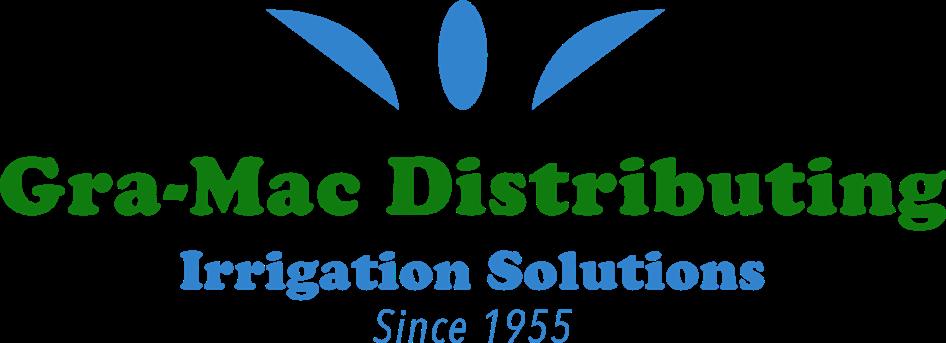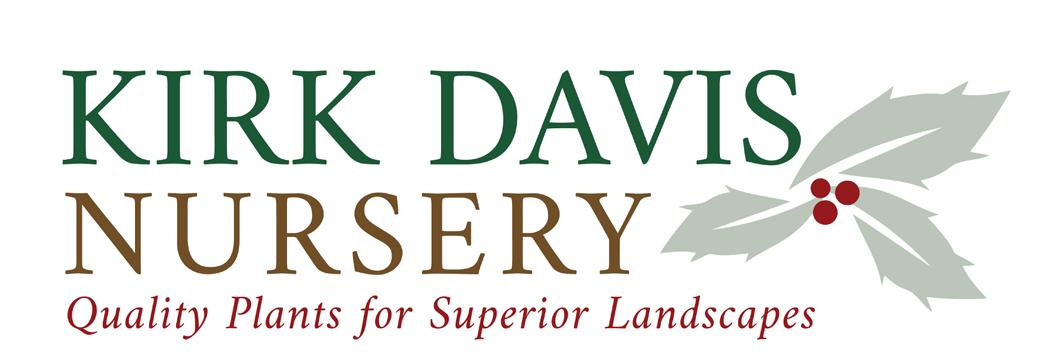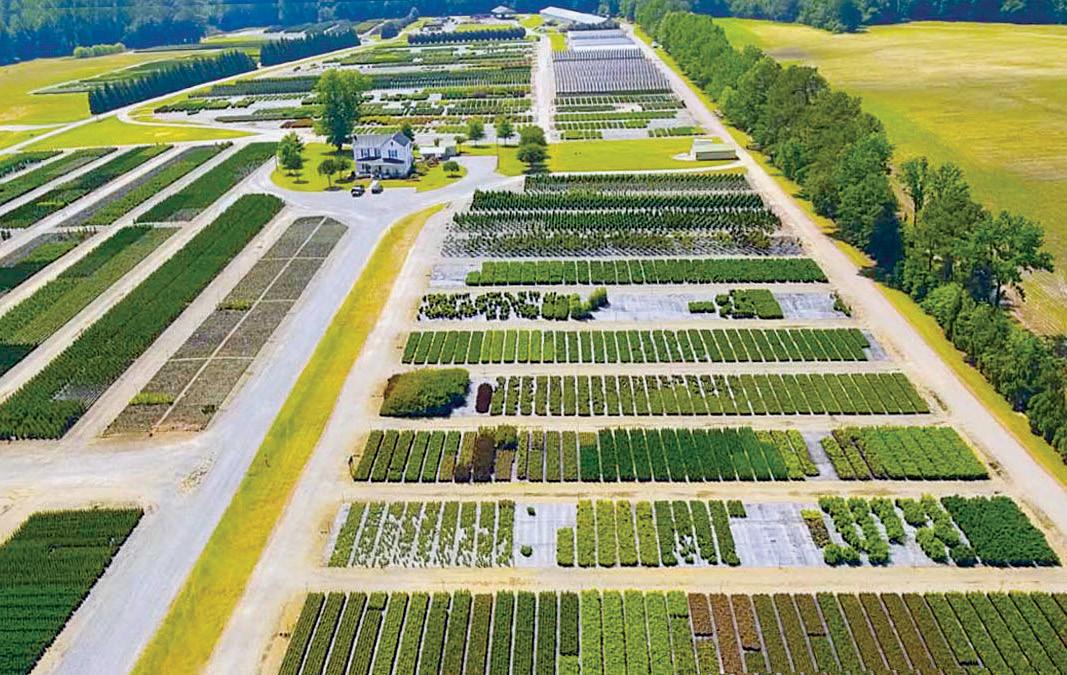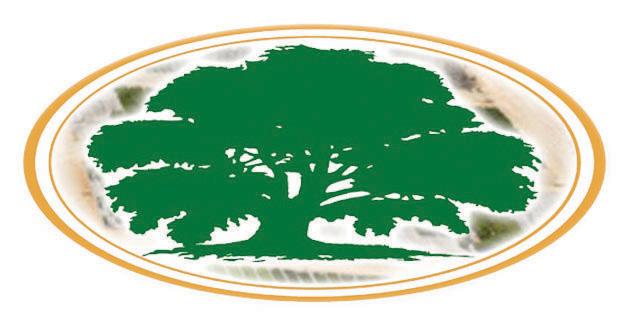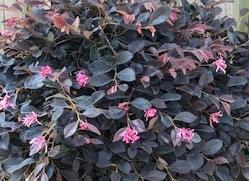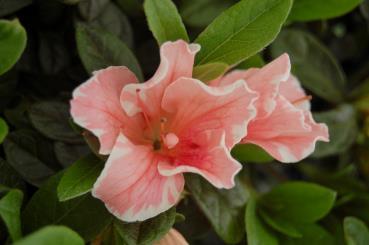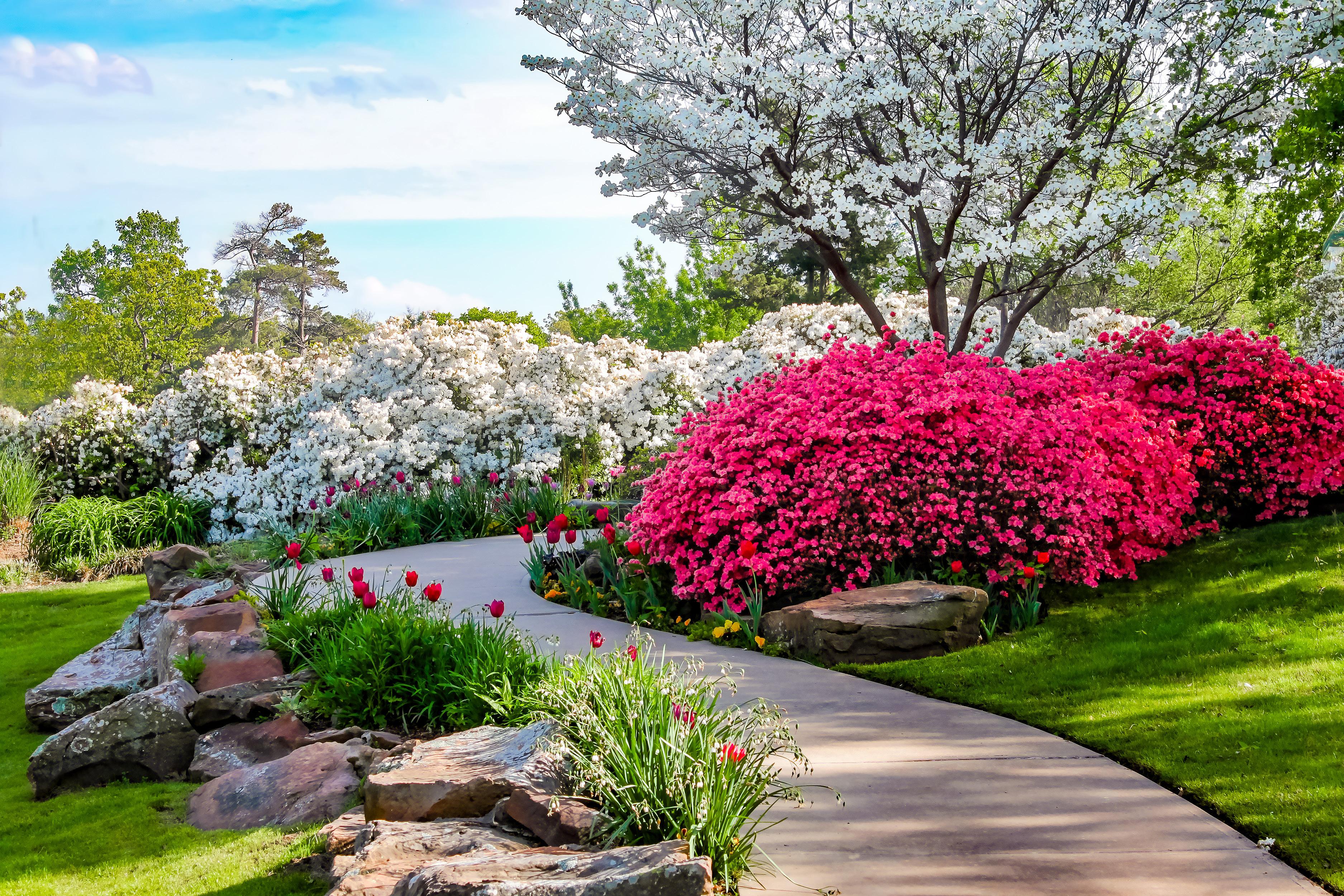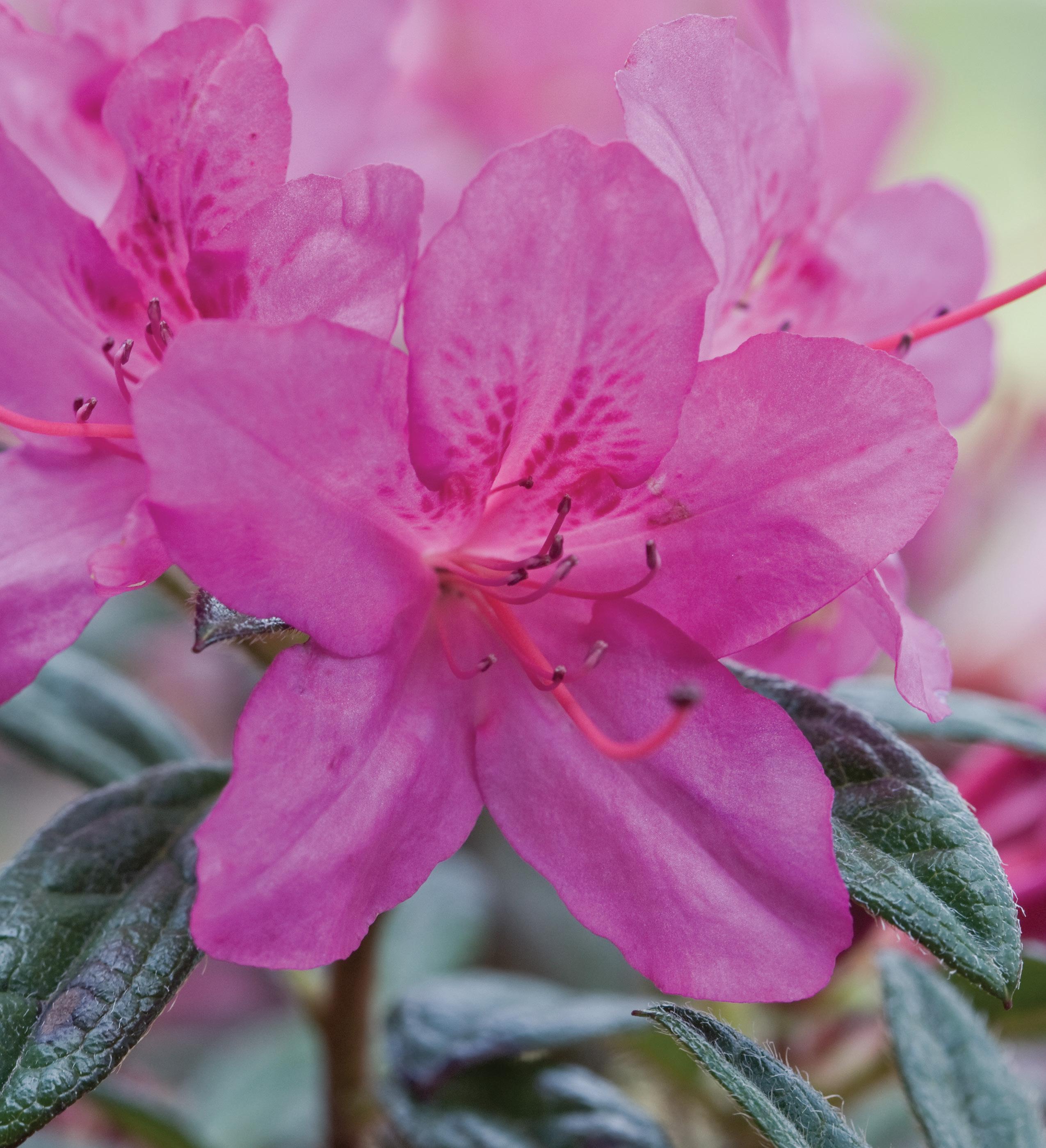Nursery Landscape
Publication of the North Carolina Nursery & Landscape Association, Inc.
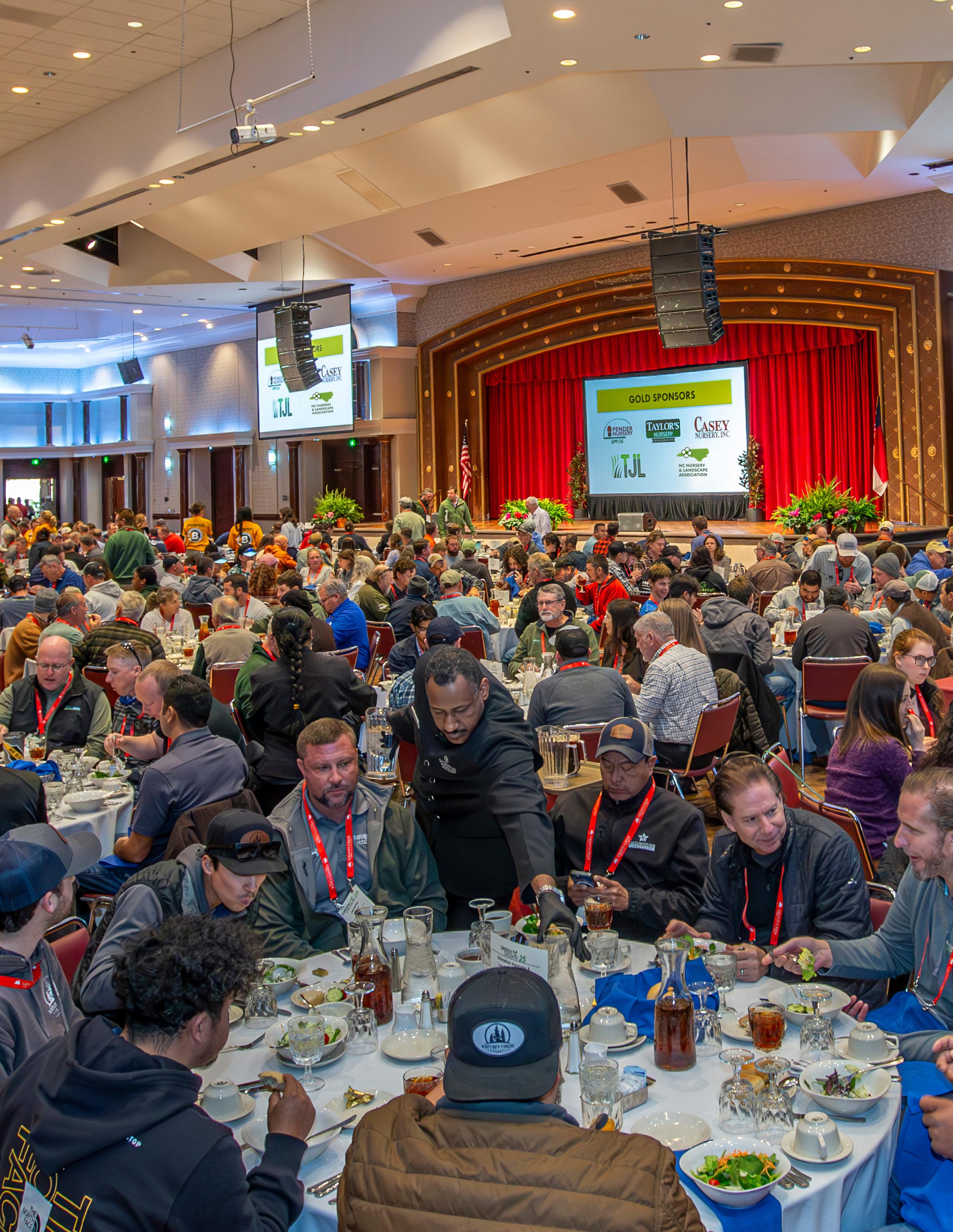

Publication of the North Carolina Nursery & Landscape Association, Inc.

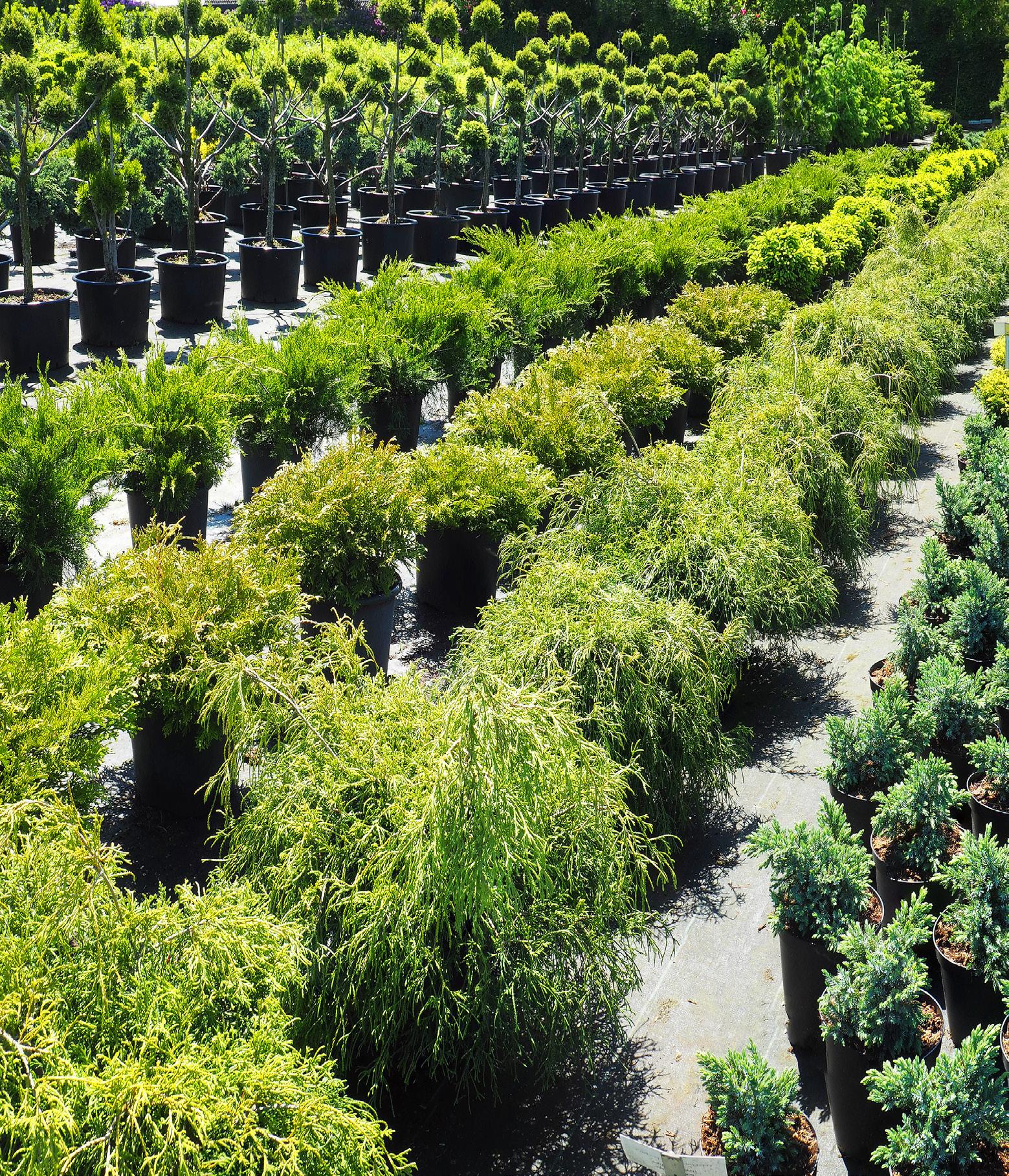




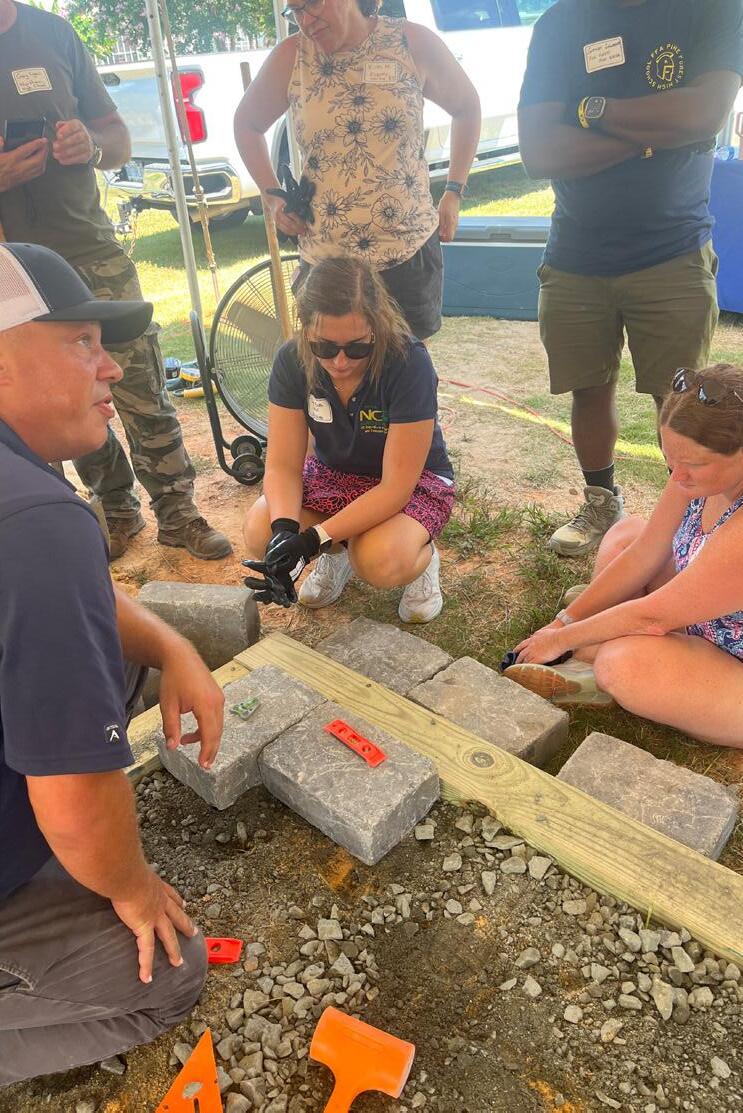
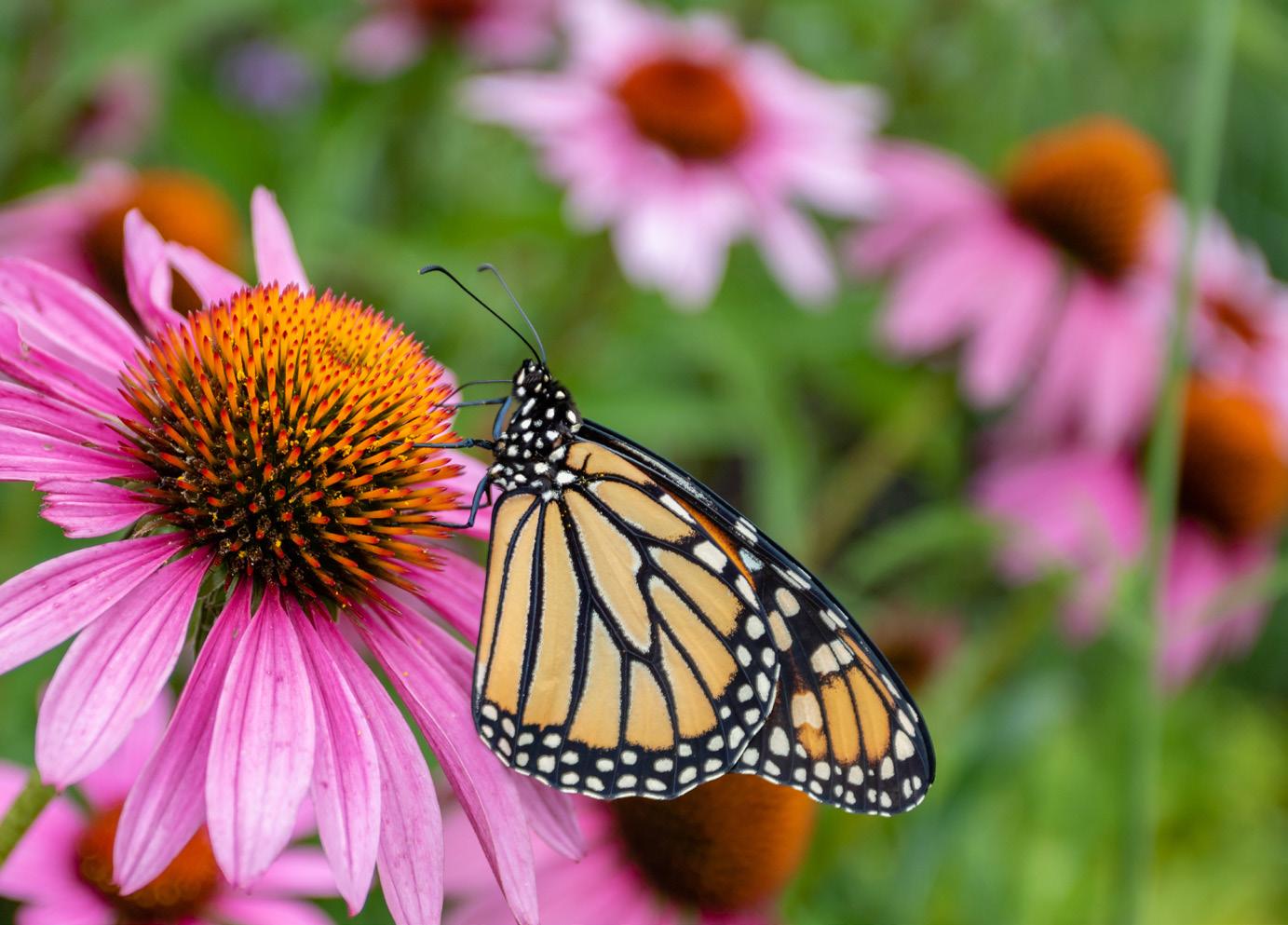

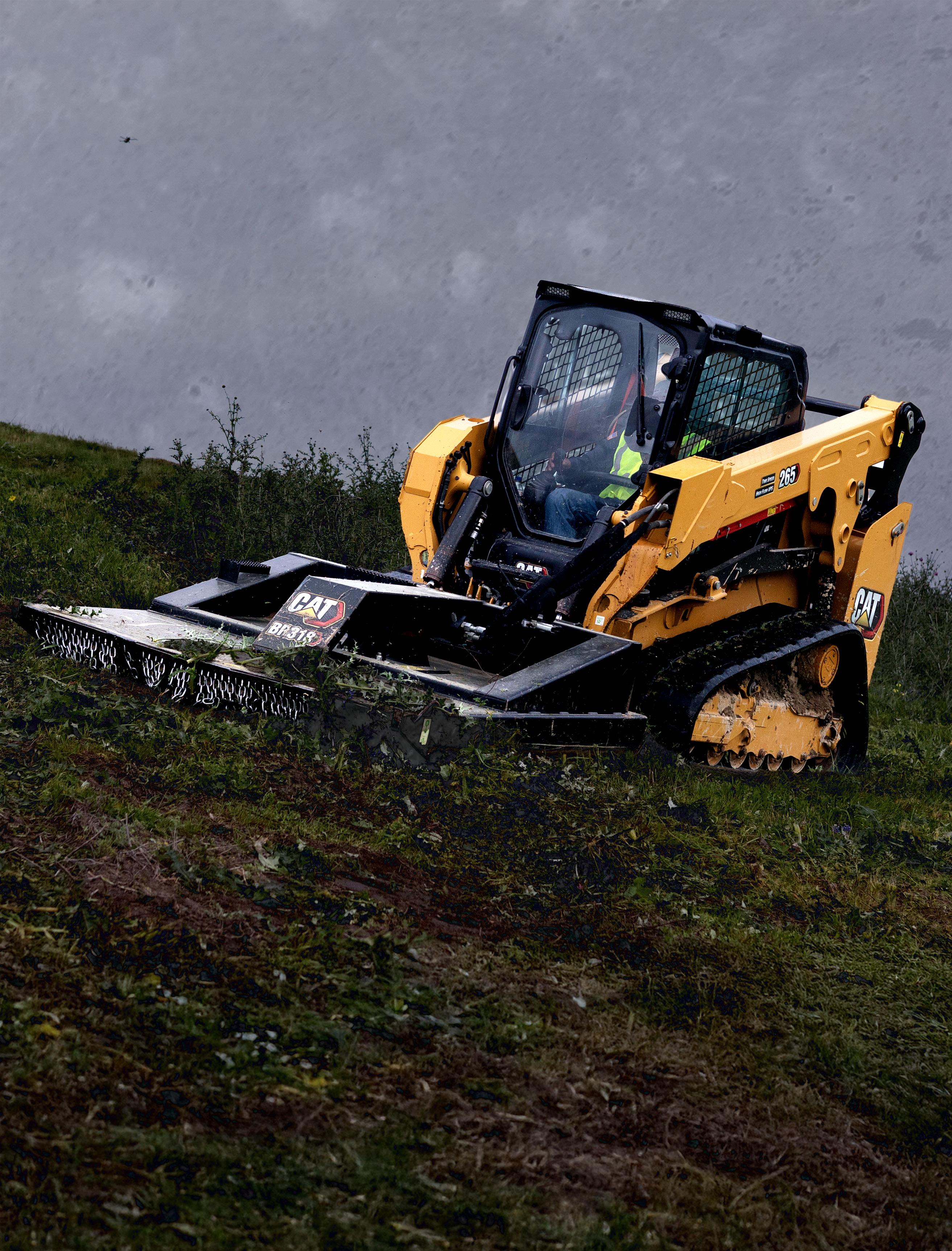
From clearing and mulching, to grinding and grading, you’ve got a job to do, and Caterpillar has the tools to get it done.
Built for power and perfect for finer details, our attachments help you maximize your work while minimizing environmental impact to create meticulous landscapes.
Whether you rent, lease, buy new or used, attachments are an important consideration when acquiring a new machine or bidding out a job. With just one add-on, you can transform your machine into something new. Over time, helping you with efficiency and ensuring the quality of work on your jobsite. Not to mention, making the most of your investment and allowing you to take on a more diverse spread of work.
LEARN MORE AT C AT.CO M / LA NDS C AP I N G
Published by
North Carolina Nursery & Landscape Association, Inc. 968 Trinity Road, Raleigh, NC 27607
NCNLA Staff
Katie Bennett Executive Vice President
Cyndi Lauderdale Director of Education
Kathryn Stansbury Director of Business Development & Strategic Partnerships
Wendi Doak Director of Marketing & Communications
Rayna Bailey Operations Manager
Nursery & Landscape Notes is published quarterly by the North Carolina Nursery & Landscape Association, Inc. (NCNLA), covering news, research, education and business in the nursery and landscape industries. The publication is distributed to approximately 825 horticulture producers, landscape professionals and industry suppliers.
Nursery & Landscape Notes is provided as a member service.
Green & Growin’ 26
January 19-23, 2026 Greensboro, NC www.greenandgrowin.com
Certified Plant Professional Exam
January 20, 2026 Green & Growin’ 26 Greensboro, NC www.ncnla.com/CPP
Robert Cagle Memorial Golf Tournament
Carolina Nursery Summit
June 23, 2026
North Carolina State University McKimmon Center Raleigh, NC www.ncnla.com/CNS
INDUSTRY EVENTS
Mid-Atlantic Nursery Trade Show (MANTS)
January 7-9, 2026
2025 NCNLA Board of Directors Officers
Dana Massey
President Plantworks Nursery Rougemont, NC
Jon Schwarz
Vice President, Secretary/Treasurer
Pender Pines Garden Center Hampstead, NC
Ariel Montañez
Past President Pender Nursery Garner, NC
Directors
Hunter Casey Casey Nursery Inc. Goldsboro, NC
Michael Gossett Gossett’s Landscape Nursery Inc. High Point, NC
Dylan Gragg North 40 Nursery Morganton, NC
Todd Lange Gregory Poole Equipment Company Raleigh, NC
Art Miller Carolina Creations Landscapes Inc. Shallotte, NC
Jason Tebben Savatree/ Arborscapes Pineville, NC
Educational Advisors
Jason Davis University of Mount Olive Mount Olive, NC Caleb Fox Alamance Community College Graham, NC
Jodi Driedger NC State University Raleigh, NC
Advertising
For advertising inquiries and publication schedule, please contact Wendi Doak at wdoak@ncnla.com or 919-819-9119, ext. 1002.
The inclusion of products or brand names in this publication is not an endorsement by the North Carolina Nursery & Landscape Association.
Mission: To provide essential value to our members through education, marketing and advocacy.
Vision: To promote and protect the interests of North Carolina’s green industry.
Connect with NCNLA facebook.com/NCNurseryandLandscapeAssociation instagram.com/ncnla ncnla.com | BuyNCPlants.com | GreenandGrowin.com
Tax Deductible Dues Contributions or gifts to NCNLA are not tax deductible as charitable contributions. However, they may be tax deductible as ordinary business expenses. A portion of your dues is not deductible as an ordinary business expense to the extent that NCNLA engages in lobbying. The estimated non-deductible portion of your dues assessment is 20%.
June 15, 2026
Lochmere Golf Club Cary, NC www.ncnla.com/golf

Attendees enjoy the Keynote Lunch at Green & Growin’ 25, a highlight of the annual Education Conference where great food, engaging speakers, and industry camaraderie come together.
Returning for Green & Growin’ 26, you can reserve a table for your team during the Tuesday and Wednesday Keynote Luncheons at the Sheraton.
NC
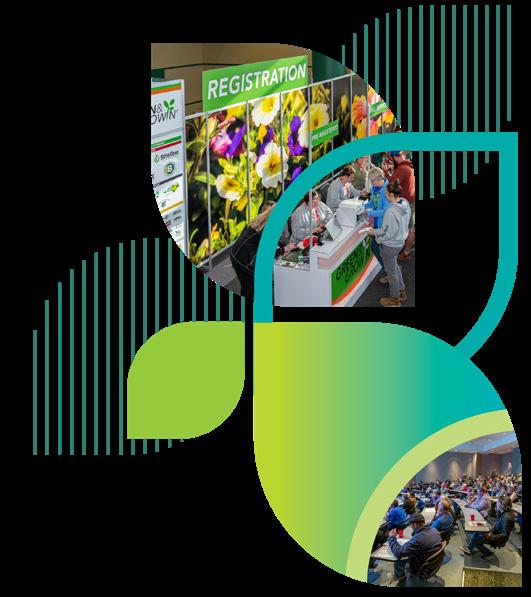

You can find the peace of mind that comes with knowing you can always find what you need, no matter where your work takes you. No project too big. No jobsite too far away. Because when you’re in the know, planning becomes easier, decisions become smarter, and your business grows stronger.
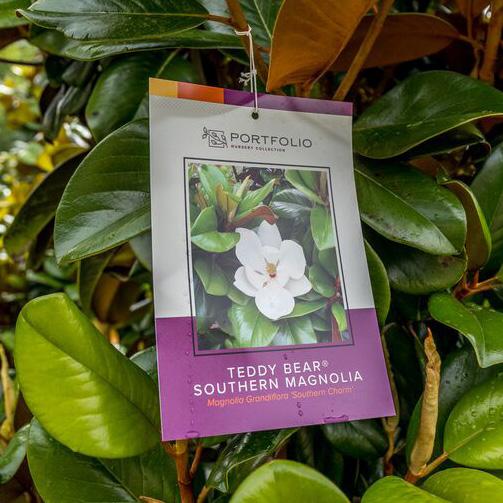
Scan this code to find the best plants money can buy!
What an amazing year it has been to serve as your president! I have enjoyed talking with many of you and learning more about your businesses and how our association can better serve our members in the future. I am honored and proud to have served on our board of directors and staff with some of the best in the industry.
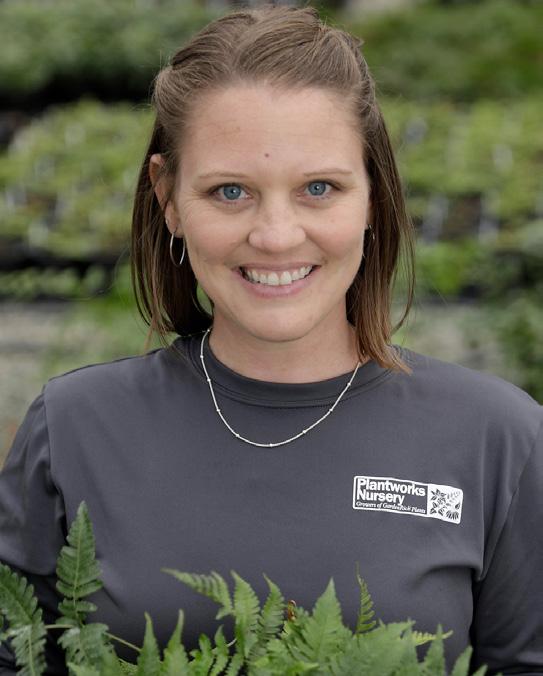
Plantworks Nursery Rougemont, NC
I am especially proud of our association’s efforts to launch the Future Plant Professional certification. Our industry’s future depends on the younger generation, and this new initiative will provide an opportunity for high school students to graduate with a credential that can help them access wonderful career opportunities.
I am also excited about the successful launch of the NCNLA PAC. I am also excited about how our advocacy efforts have truly taken off this year, highlighted by the full launch of the NCNLA PAC. Our staff and members took part in Legislative Day at the Capitol in Raleigh, a PAC-sponsored legislative reception; AmericanHort’s Fly-In Summit in Washington, D.C.; and the NC Chamber’s Ag Allies Conference — all while seeing an encouraging increase in PAC contributions. I look forward to future fundraising and invite you to support these efforts, which are critical to the ongoing success of our industry. We want to have our voice heard and befriend our legislators when things are going well, so that when we need them to fight for us, we will have established relationships that work in our favor.
In other news, the Green & Growin’ 26 educational tracks have some exciting additions! On the afternoon of Tuesday, January 20, NCNLA will offer a new Floriculture Track, featuring three sessions for greenhouse growers and all participants wanting to expand their knowledge in plant nutrition, insect control and more.
On Wednesday, January 21, the new afternoon session will be “Exploring Regional Plants.” We hear a lot about native versus non-native plants, but what does that actually mean? Come learn how we can all approach the goal of creating a harmony of plants in our ecosystems.
All day on Wednesday, January 21, NCNLA has brought back the Grower’s Track, with the help of the JC Raulston Arboretum, securing the very best speakers for our nursery growers.
New this year, our Annual Member Meeting will be held on Wednesday evening, followed by the President’s Reception. Come join us for an evening of networking, dessert and cornhole following a busy day of education sessions.
The Marketplace will be open from 9:00 AM - 5:00 PM on Thursday, January 22, and 9:00 AM - 2:00 PM on Friday, January 23. Friday will be Student Day, so be sure to engage with our future employees, owners and buyers!
I encourage you to register early and come ready to network and learn something new.
Let’s Grow Together.
As I write this, I’m reflecting on an energizing recent trip to Washington, DC, during which AmericanHort carried the voice and concerns of our country’s horticulture industry straight to policymakers. The conversations were real, focusing on issues such as labor, trade, and the regulatory pressures facing nurseries and landscape businesses. I’m incredibly proud of how our North Carolina delegation strengthened relationships, spoke clearly, and shared not just the challenges we face, but also opportunities for growth and innovation.

Katie Bennett NCNLA Executive Vice President
This trip, which coincided with the one-year anniversary of Hurricane Helene’s impact on Western North Carolina, happened to take place while Gov. Josh Stein was in Washington advocating for additional recovery funding for our state. To say the timing of our visit was significant would be an understatement — especially since discussions unfolded around federal disaster funding and recent changes to the H-2A visa program, which you can read more about in this issue’s legislative update.
Looking ahead, one of the highlights on our calendar is Green & Growin’ 2026. This flagship event is so much more than a trade show — it’s where ideas spark, networks expand and strategies for the year ahead take shape. Mark your calendars now for our 2026 dates! Our team is working hard to ensure that every education session, Marketplace offering and social gathering delivers real value — not just in terms of what you’ll learn, but also the people with whom you’ll connect.
I also want to highlight a schedule change: Our Annual Member Meeting will now take place on Wednesday, January 21. This adjustment comes directly from member feedback. By moving the meeting away from the Marketplace opening morning, we hope to give everyone more space to fully participate. Following the meeting, we’ll host the President’s Reception, featuring our popular cornhole tournament to benefit the scholarship program. We hope to see you there!
Of course, our Marketplace wouldn’t be possible without our exhibitors. Thank you to everyone who has already submitted contracts for Green & Growin’ 26! Exhibitor packets with key details will be mailed in November, so keep an eye out for yours.
As a reminder, NCNLA memberships now align with our fiscal year, meaning all memberships expire each year on September 30. A heartfelt THANK YOU goes out to everyone who has already renewed for 2025-26. We hope you’ll display your NCNLA member window cling proudly on your office door, shop window or truck to help spread awareness about our association. If you haven’t renewed yet, it’s not too late! Call our office at (919) 816-9119, and a member of our team will be happy to help. And if you haven’t heard from us about renewal, we may not have your current information on file — please reach out so we can get you updated.
I encourage you to take some time with this issue, as there’s a lot of content in here to support your business and keep you connected to the industry. From timely legislative updates to details about Green & Growin’, we’ve packed it with resources, opportunities and inspiration. Most importantly, we look forward to seeing you in person this January at Green & Growin’!


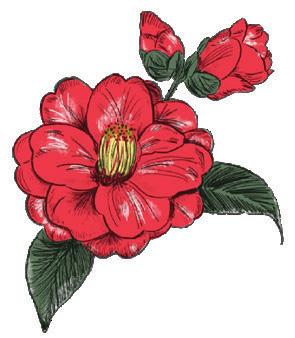
NCNLA MEMBER SPOTLIGHT »
Pender Pines Garden Center
Hampstead, NC
Owner/Operator
Jon Schwarz
In business since 1996
Number of employees 30
Member of NCNLA
Since the late 1990s or early 2000s
Favorite offerings from NCNLA Green & Growin’ show and educational program
How did you get into the business?
I was born into the business. I started at 2 years old, handing my dad hosta roots and pots in the back of our old 1974 Suburban, which doubled as a potting table. He would bring home compressed bales of Promix from his job, and we grew out daylilies, hosta and astilbe. We also had a small greenhouse where we grew hanging baskets and bedding plants. At 12, I was sticking trays of Pachysandra and watering our crop when I got home from school. At 14, I took on my first real job at a garden center and decided after the first summer that horticulture was for me.
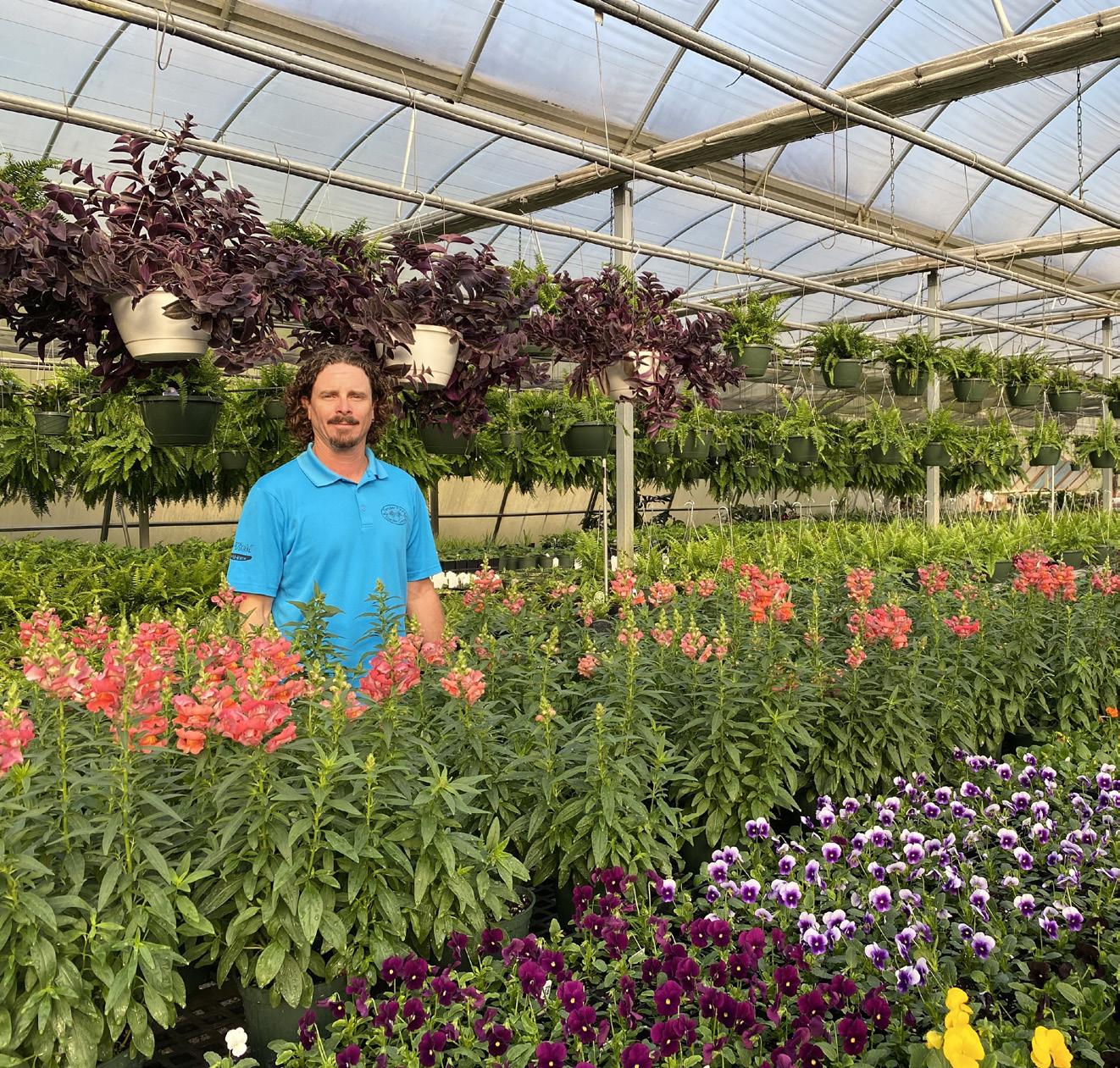

What is a typical day like for you and your staff?
We run a swing shift, with the production crew coming in around 7:00 AM and the retail crew between 8:00 AM and 9:00 AM. A typical day is filled with customer service, maintaining the grounds and inventory, and growing out our annuals, perennials, trees and shrubs.
What has been the most rewarding part of your career?
The most rewarding part of my career has been the relationships and landscapes I have gotten to see mature and develop over the years — especially in terms of the educational side of our retail. We try not to just tell people what to do, but the whys and hows, so they can make betterinformed decisions in their own landscapes.
What is your company best known for?
We are best known for our extremely wide selection of plants, including house plants, herbs, vegetables, perennials, natives, shrubs and trees. We also have a highly educated and well-informed staff. People know they can depend on us for anything and everything horticultural.

What issues are you concerned about as a company in the green industry?
Labor. The lack of skilled labor in our young people is a concern, and the cost of housing is making it difficult for staff to live and stay local.
What have you gained from your involvement in NCNLA?
My biggest gain would have to be the increased size of my professional network. Working on the NCNLA Board, I have been able to form relationships across all sectors of the industry — many of which I would have never been able to establish from the store alone.
What advice do you have for someone interested in or just starting in the industry?
My advice is to never stop learning and asking questions. Get out

there and just start doing it. My best tool has always been experience. Find a mentor who can help teach, train and/or employ you. The only way to really learn horticulture is by doing it.


NCNLA would like to thank Zach Greenhill of SiteOne for hosting a CPP exam on September 5 in Durham, NC. NCNLA thanks supporters like SiteOne so we can continue to offer CPP exams in various parts of the state, making testing more accessible to the industry.
Congratulations to the following individuals who have earned their CPP accreditations:
Kelly Fortune, SiteOne Landscape Supply
Ward Tarlton, City of Durham Parks & Recreation
Victoria VanAuken, Bland Landscaping Co. Inc.
Julia Fernandez, Plantworks Nursery Inc.
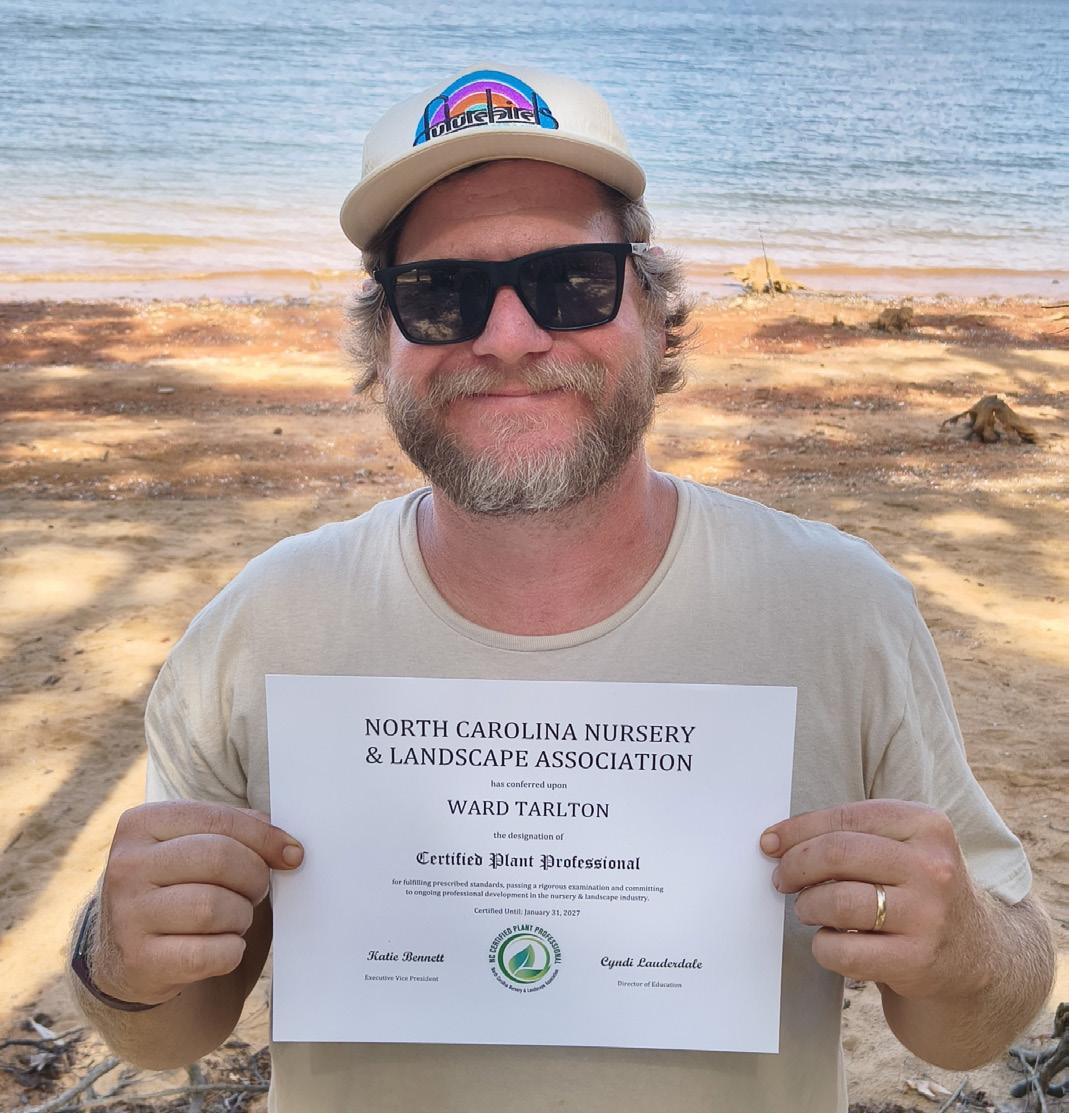
For more information about the
visit www.ncnla.com or email cpp@ncnla.com.
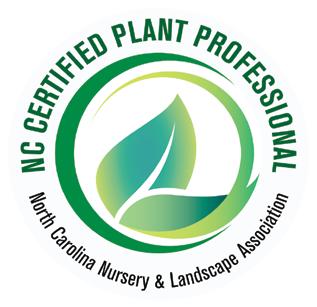




Katie Bennett Executive Vice President, NCNLA
In September, NCNLA members and industry partners traveled to Washington, DC, for AmericanHort’s Impact Washington Fly-In Summit, bringing the priorities of our industry directly to federal lawmakers.
The 2025 summit drew 140 participants from 25 states, with North Carolina strongly represented. Our delegation included Legislative Committee Chair Gary Whitehurst (Worthington Farms), Bill Jones (Carolina Native Nursery), Abe VanWingerden and Mark Yelanich (Metrolina), David Hoffman (Hoffman Nursery), and myself. Bert Lemkes of Tri-Hishtil also represented our state by serving as our team lead and contributing his expertise on grafted vegetable plants.
During the three-day summit, attendees participated in more than 220 meetings on Capitol Hill. Conversations focused on key industry priorities such as agricultural labor, the Farm Bill, supply chain stability and horticultural research. The
Fly-In also featured a dynamic lineup of speakers, including Sec. of Labor Lori Chavez-DeRemer, Sen. Joni Ernst (R-IA), Rep. Andrea Salinas (D-OR-06), House Agriculture Committee Policy Director Trevor White, U.S. Department of Agriculture (USDA) Senior Policy Advisor Alison Slagell, Jonathan Cordone of the Specialty Crop Farm Bill Alliance, and labor experts Lynn Jacquez and Laurie Flanagan.
The North Carolina delegation met with staff from Sens. Ted Budd, Tim Scott and Lindsey Graham, as well as Reps. Deborah K. Ross, Tim Moore, Valerie P. Foushee, David Rouzer, William Timmons and Gregory F. Murphy. Rep. Virginia Foxx welcomed the group personally, even sharing that she still keeps Blum’s Almanac in her desk for easy reference.
Additionally, Michael Frantz, co-owner of Frantz Wholesale Nursery, testified before the House Agriculture Committee on September 16. His remarks gave national visibility to horticulture’s priorities and reinforced the industry’s messages.
By the Numbers: 2025 Fly-In Summit
• 140 participants
• 25 states represented
• 220-plus Capitol Hill meetings
• 1 powerful NC delegation

Why It Matters: Labor remains the No. 1 challenge for nurseries and landscapers. Visa reform is essential to keeping our businesses staffed and competitive.
The summit came at a critical time, due to the following recent developments in the H-2A and H-2B visa programs:
• Aug. 26, 2025 – A federal court vacated the 2023 Adverse Effect Wage Rate rule.
• Aug. 29, 2025 – The USDA discontinued the Farm Labor Survey.
• Sept. 16, 2025 – The H-2B visa cap was reached, highlighting the importance of raising the cap.
• Sept. 18, 2025 – The U.S. State Department reinstated visa interview waivers for H-2A renewals.
Our discussions centered around …
H-2A Reforms Needed:
• Single electronic application portal
• Staggered start dates and expedited return-worker processing
• Shift recruitment from print to digital
• Greater wage predictability with capped fluctuations
H-2B Fixes Needed:
• Raise the annual cap to at least 120,000 visas
• Change Department of Homeland Security appropriations language from “may” to “shall”
• Exempt certified seasonal employers from the cap
• Adopt the Specialty Crop Competitiveness Act of 2024 definition
• Expand affordable, effective crop insurance for specialty crops
• Improve the Tree Assistance Program
• Fund the Technical Assistance for Specialty Crops program to support exports
• Increase Specialty Crop Block Grant Program funding by $5 million per year
• Support a pilot program raising federal gross vehicle weight limits to 91,000 pounds on six axles, up from the outdated cap of 85,000 pounds set in 1982.
Despite accounting for 15% of U.S. crop agriculture, nursery and greenhouse crops receive less than 1% of USDA research funding. NCNLA advocated to:
• Expand the Floriculture & Nursery Research Initiative
• Support the IR-4 Program at North Carolina State University

Quote from the Hill: “Trips like these underscore the value of having our industry at the table when national and state policy is shaped.”
—Gary Whitehurst, Worthington Farms
• Expand the Specialty Crop Research Initiative
• Modernize research facilities
• Strengthen USDA’s Plant Pest & Disease Management Program (PPA Section 7721)
While AmericanHort leads federal advocacy, NCNLA remains deeply engaged at the state level. Guided by our Legislative Committee and supported by our lobbyist, NCNLA meets monthly to monitor policy, protect our industry and advance proactive legislation.
NCNLA also participates in the AmericanHort Lighthouse Program, which provides members with biweekly Impact Washington email updates. To sign up, contact Katie Bennett at kbennett@ncnla.com.
The NCNLA Political Action Committee (PAC) represents the interests of the nursery and landscape industry at the state capitol in Raleigh, NC.
Complete and return this form with payment. Contributions are for the 2025 calendar year. Contributions must be made by personal check (no company checks), personal credit card or personal bank draft. PAC funds are used to support candidates for state elective office who share NCNLA’s policy goals and understand the importance of maintaining a positive legislative environment for the green industry. Thank you for your contribution!
Legacy Society
Annually ($6,400)
Advocate Club
Annually ($500)
Capitol Society Annually ($4,500)
Bicentennial Club
Annually ($200)
President’s Circle
Annually ($2,500)
Century Club
Annually ($100)
My payment is by: Personal check (payable to “NCNLA-PAC”) Amount: $ Personal credit card/bank draft Amount: $
Please provide the following information:
Name:
Address:
Employer/Company Name:
Phone:
Other $ Champion’s Circle Annually ($1,000)
Email:
City, State Zip:
Job Title:
All contributions must be from a personal account. We cannot accept company/corporate checks or credit cards. If you are contributing using your credit card or bank draft, you will be invoiced electronically at the email address you provided. If contributing by check, please make personal checks payable to NCNLA-PAC and mail to: NCNLA-PAC, 968 Trinity Road, Raleigh, NC 27607. If submitting this form electronically, please email it to kbennett@ncnla.com.
North Carolina law requires political action committees to report the name, mailing address, job title and name of employer for each individual whose contributions total in excess of $50.00 in an election (defined as the period beginning the day after the general election up to and including the primary and the period beginning the day after the primary up to and including the general election). Contributors may not give more than $6,800 per election. Contributions are not tax deductible for federal or state income tax purposes.
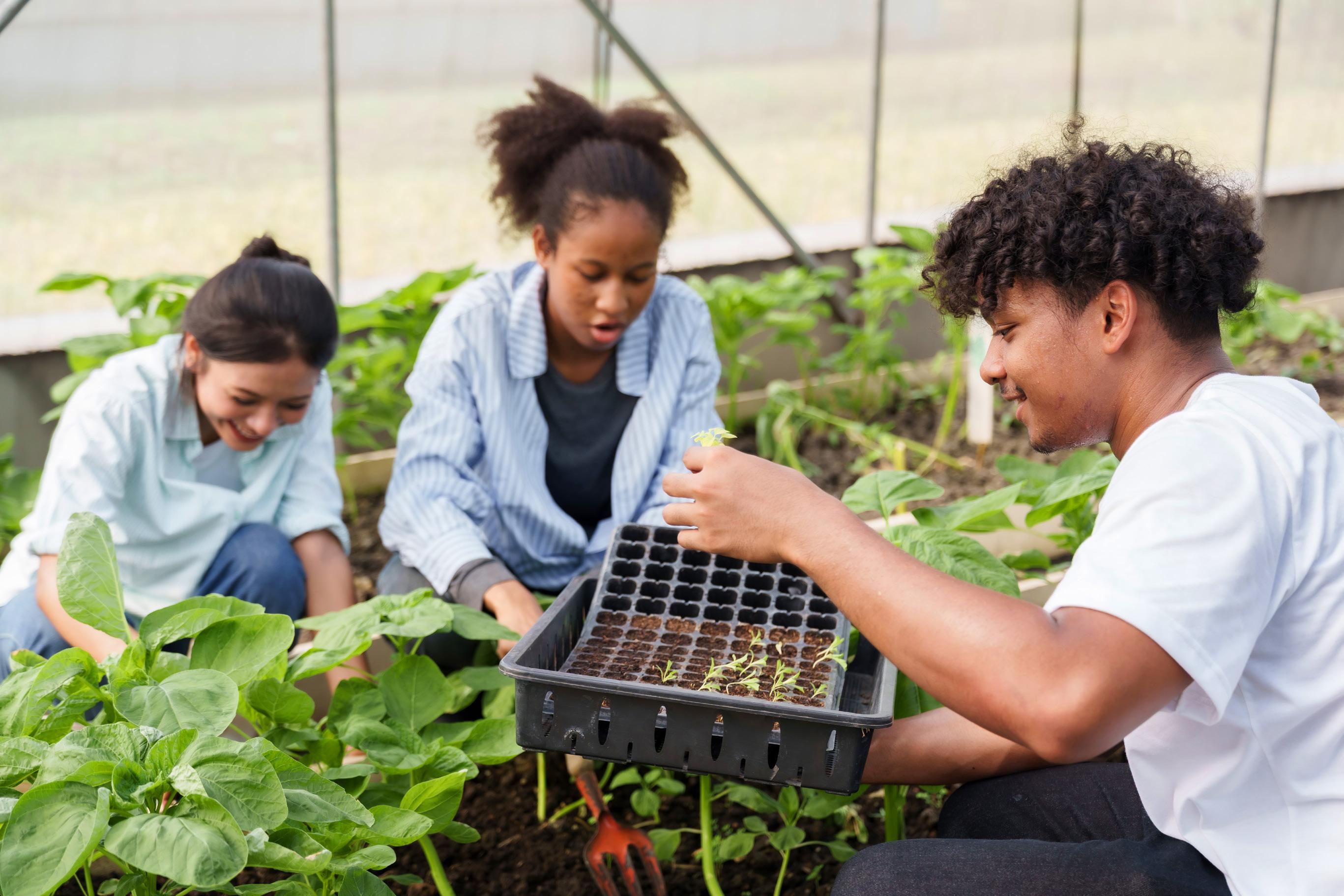
Introducing NCNLA’s Future Plant Professional (FPP) Credential
The Future Plant Professional (FPP) Credential has officially launched this fall! This exciting new certification initiative marks a major step forward in preparing and inspiring the next generation of North Carolina’s green industry leaders.
The program evaluates the knowledge, skills, and abilities of high school students enrolled in Horticulture II –Landscaping (AP44) or related agricultural courses who are interested in pursuing careers in nursery production,
landscape, and horticulture. As part of the Certified Plant Professional (CPP) certification “family,” the FPP bridges classroom learning with real-world application—creating a confident, well-prepared pipeline of future professionals for our industry.
By connecting educators, students, and employers, NCNLA is cultivating awareness of the diverse and rewarding career opportunities —and helping secure a sustainable future for North Carolina’s green industry.
We’re proud to welcome the Future Plant Professional credential into the NCNLA certification family.
Learn more about the Future Plant Professional Program at ncnla.com/FPP
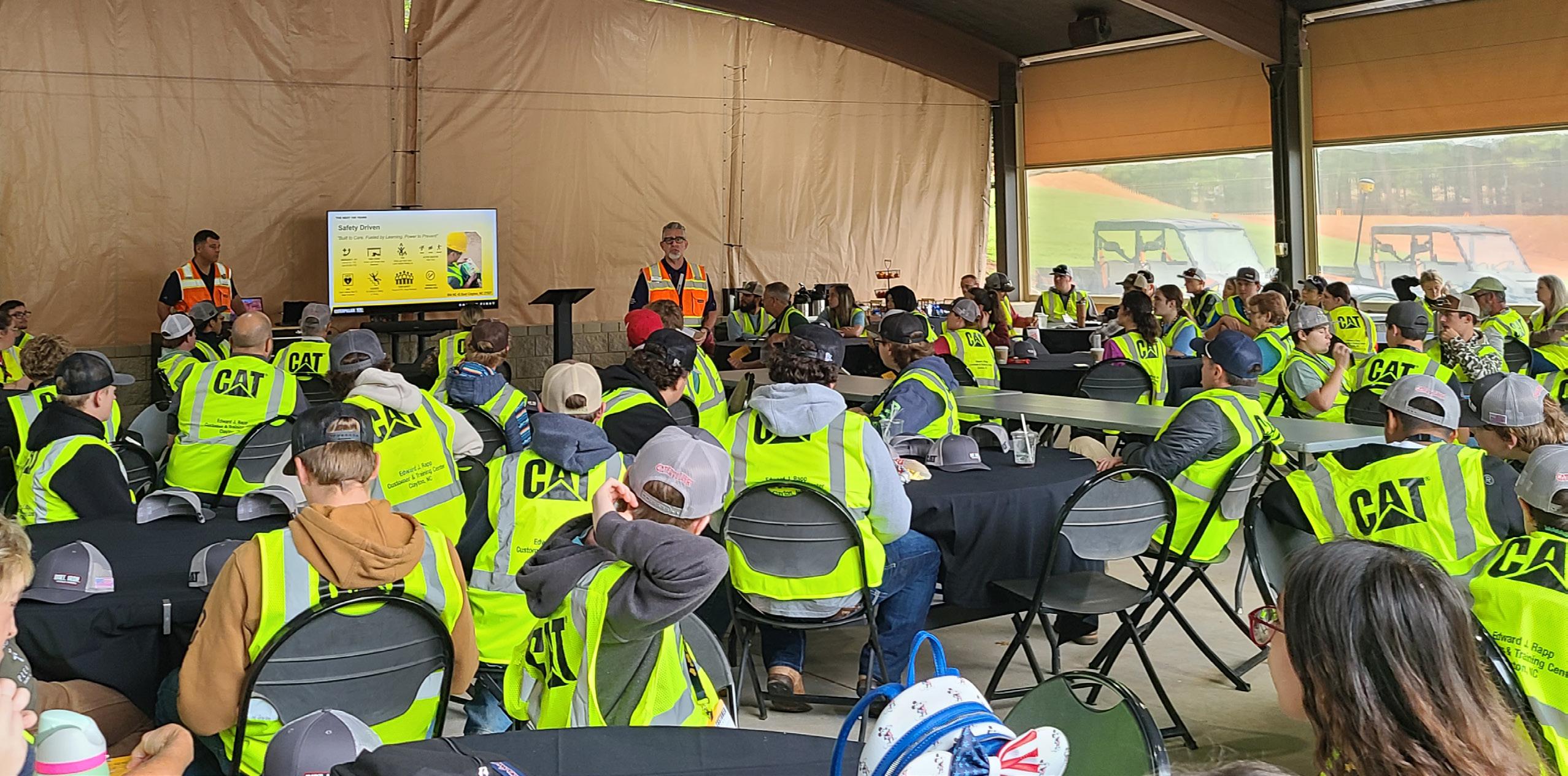
More than 100 students, teachers and industry professionals came together September 11 for the first-ever NCNLA Student Experience at Caterpillar, a full day designed to introduce middle school, high school and college students to careers in the green industry. Hosted at Caterpillar’s state-of-the-art training facility in Clayton, the event combined hands-on learning with career insights from industry leaders.
The day kicked off with a check-in and safety briefing before students rotated through four interactive stations:
• Drainage Utilizing Ease-of-Use Technologies
• Compact Truck Loader/Work Tools 101
• Making the Grade with Technology
• Irrigation Layout
Between rotations, attendees enjoyed a fabulous lunch featuring an expert-led green industry career panel. Panelists included Todd Lange (Gregory Poole Equipment Company),
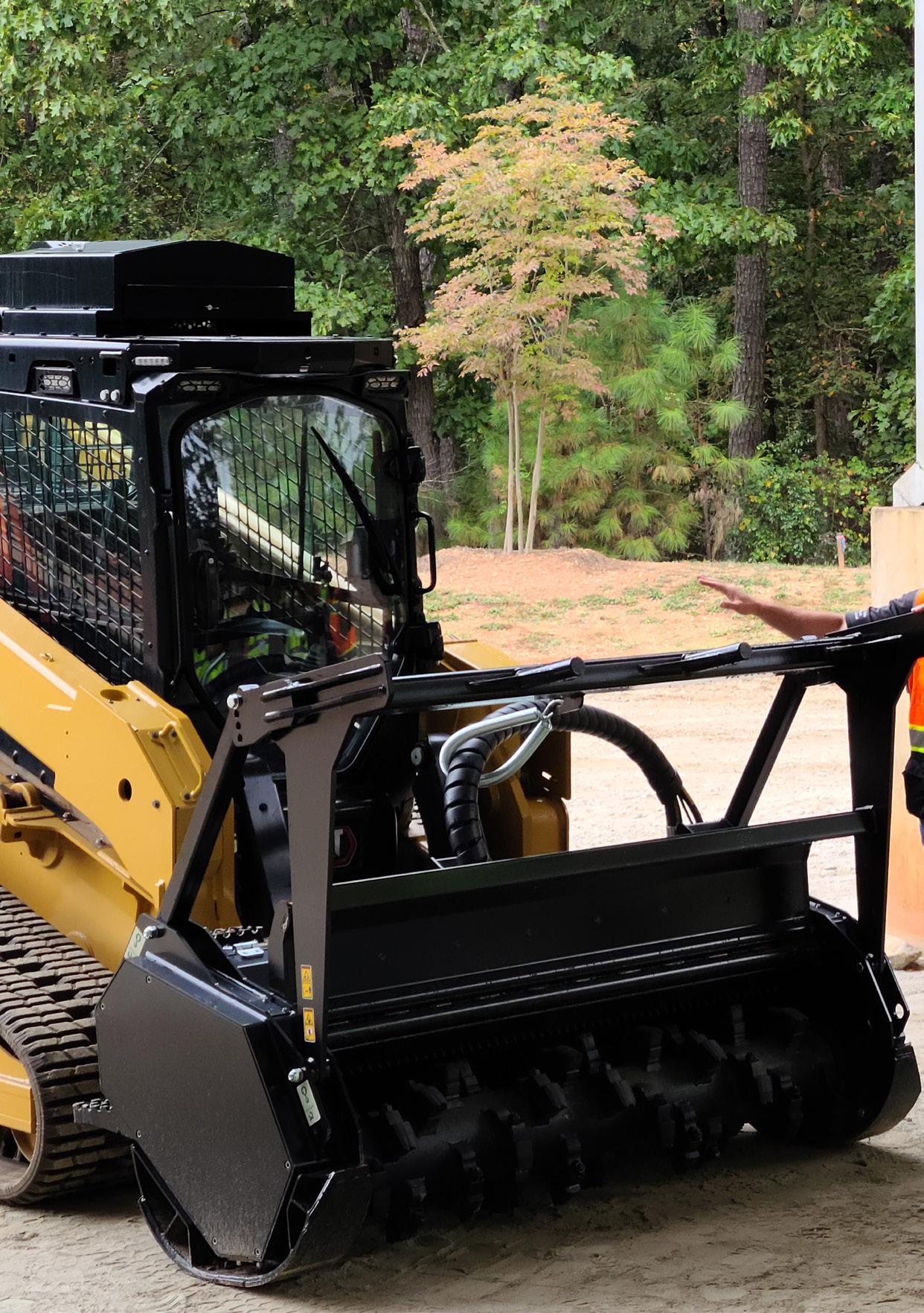
Jon Schwarz (Pender Pines Garden Center), Jason Tebben (SavATree/ Arborscapes) and Dana Massey (Plantworks Nursery), who shared real-world guidance, encouragement and personal stories about the many career paths available in landscaping, horticulture and related fields. The conversation was skillfully moderated by Hilarie Blevins of Sandhills Community College, who kept the dialogue engaging and student-focused.
After rotating through the learning stations, students wrapped up the day with a choice between operating Caterpillar equipment or touring the factory, creating a memorable conclusion to the event.



Represented
Students traveled from across the state to participate, representing:
• Avery County FFA
• East Wilkes FFA
• Hobgood Charter School
• North Iredell High School FFA
• Sandhills Community College
• Springfield Middle School
• University of Mount Olive
• Union Pines High School
• Wake County Public School System
The event also provided a timely opportunity to promote NCNLA’s new Future Plant Professional (FPP) Program, which equips high school students with an industryrecognized credential and connects them with employers.
NCNLA extends special thanks to annual sponsor Caterpillar for its tremendous support and gracious hospitality. The company’s partnership helped make this inaugural Student Experience a success, providing students with an inspiring, real-world view of the green industry’s opportunities.
Nursery & Landscape Notes is introducing you to the next generation of green industry professionals by featuring current and recent college students with plans to pursue careers in the field.
Name: Wesley Fox
Hometown: Sacramento, CA
College: North Carolina State University
Graduation date: May 2026
Major/Area of study: Horticultural science
Horticulture-related places you have worked/interned, if applicable: NC State College of Agriculture and Life Sciences Greenhouse
I first discovered I liked plants when I was stationed with the military in Guam. The week I moved into my house there, a neighbor who was moving out left a huge Adenium obesum, what is commonly called a desert rose, on the curb. I rescued it and grew it for the next two years. Guam was filled with diverse tropical plants that caught my eye. My next duty station was Hawaii, where the plant varieties were so beautiful. Next I went to Tennessee, where I bought a house that came with nearly an acre of neglected Bermuda grass and a defunct flower bed. During the next three years, I learned about grass and got into gardening. When we sold the house, the buyers told me they bought it in part due to the high quality of the landscaping. From there we were sent to Norfolk, VA, where I again reclaimed a yard of weeds into a beautiful yard, and I started to get into houseplants pretty heavily.
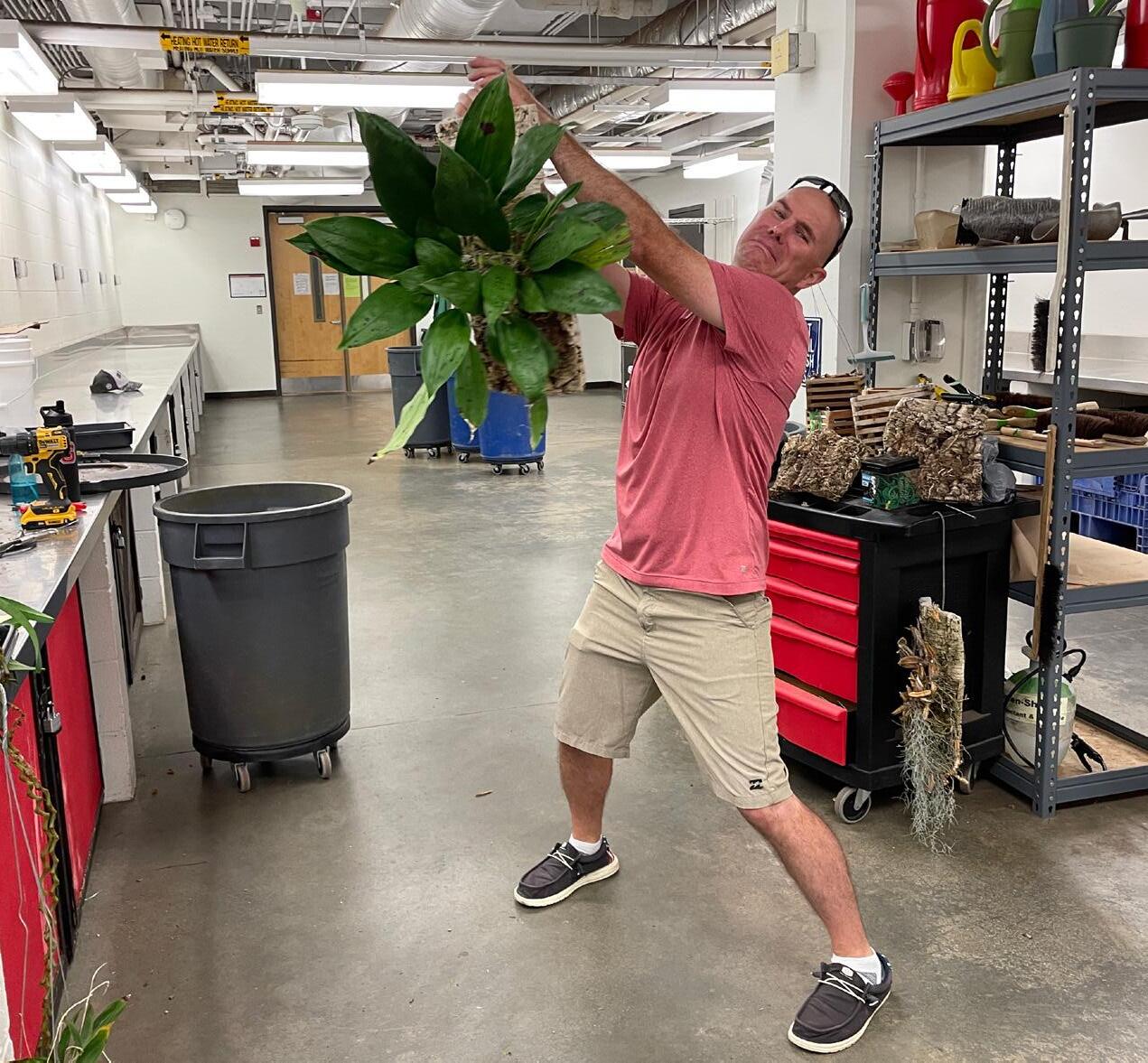
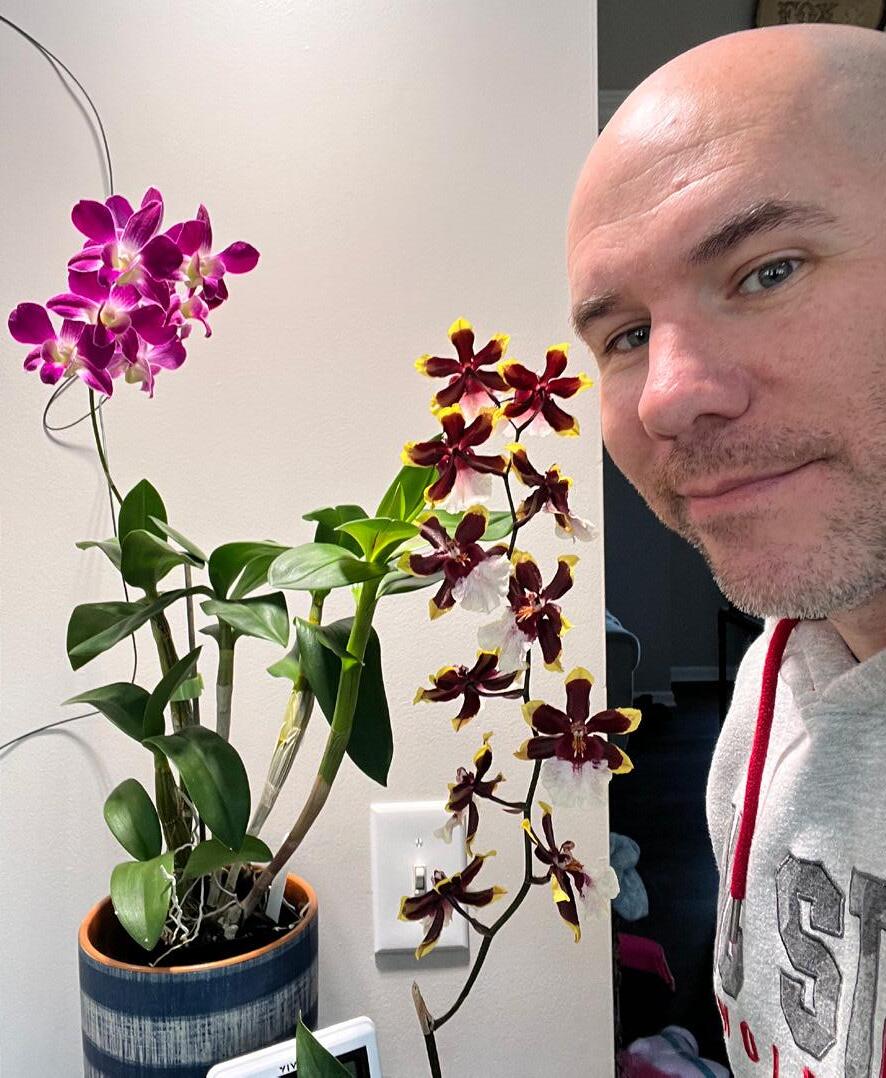

After 18 months in Virginia, I decided it was time to retire. I moved my family to North Carolina with plans to attend NC State’s horticulture program. Around that time I saw an advertisement for an orchid festival. I had a few orchids and grew them with a lot of success, but nothing notable. When I saw all the orchids at the festival, I was in awe. So much variety, so many colors and such a show of how diverse the different genera of orchids are. From there I was hooked, and I wanted to know everything about orchids. So I started collecting and learning.
What were your most valuable experiences, either in school or from other exposure to the industry, and why?
So far my experience in the world of horticulture has been a dopamine-filled adventure. When I first got
into turf, I enjoyed the sense of accomplishment after a long, stressful day at work. I started learning, and then people began asking me for advice on how to fix their yards.
That same sense of accomplishment for me applies to orchids, too — just on a much slower timeline. With orchids, results aren’t proven in a season, but rather over the course of years. Despite that, with every new orchid comes a new challenge to master — a different species from a different climate that requires me to learn what needs to be done differently for that orchid to thrive. When it works and I have a year-round display of different orchids in flower in my house, it fills me with joy.
What have been your favorite college classes, and why?
Anything having to do with plants or greenhouses. I really liked Plant ID, studying all the different plants and getting a crash course in relearning Latin. I’ve also enjoyed biology and learning about all the processes in plants that make them do what they do. Usually the more technical a class is, the more I like it.

What are your plans after graduation?
After graduating from the two-year NC State associate’s program in 2026, my plan is to matriculate into the four-year horticulture program. From there I would like to get a job in plant breeding or tissue culture. Long-term, after getting experience in the industry, I would like to breed my own orchids and open my own business.
What advice would you give to a student interested in the field?
Everyone follows their own personal journey. If a new high school grad is interested in horticulture, I’d say jump
on it! NC State has a great program. I have loved the welcoming atmosphere, and the professors have all been wonderful.
Fun question: What is your favorite plant, and why?
In case you haven’t figured it out yet, orchids are my favorite — for many reasons. There are 28,000 naturally occurring species, and they are found on nearly every continent around the world, except for Antarctica. They readily hybridize, resulting in 192,000 registered hybrids. They have formed unique symbiotic relationships with pollinators and even fungi, which help germinate their microscopic seeds. Their scent or shape — or both, in a lot of cases — are specific to a certain pollinator in their natural environment. One thing I really love is that on some species, the flowers can last for months on end. Lastly, they are so diverse. when people think of orchids, they often think of the Phalaenopsis orchids you can find at the grocery store — but orchids are so much more diverse and interesting than that.

Have you ever thought to yourself:
• There just aren’t enough hours in the day.
• I wish I had more time to _______.
• If I had more time, I would ______.
• One day …
• When I have more time …
• When I’m retired …
We are all racing against the clock. The demands and pressures of modern society require more from us, often in the form of demands for our time, effort and energy. Whether you are a self-starting business owner or an employee, the most crucial asset you have is your time — which, being a finite resource, has value. You can exchange time for income, invest it in a worthy pursuit or spend it however else you see fit. Since the ancient Sumerians developed the 60-minute hour and the 24-hour day about 5,000 years ago (National Institute of Science, 2025), humans have sought to manipulate these units of time. The truth, though, is that society as a whole has numerous false preconceived notions about time — fallacies like these:
Fallacy #1: We think we have more time than we do.
The truth is that no one knows precisely how much time they have left.
Fallacy #2: Time can be saved like a bank account and used later.
In reality, time is elusive. The past is history, and the future is a mystery. You cannot save time any more than you can slow the sand pouring through an hourglass. Once time has passed, you cannot get it back. However, what you can do is plan for the future. Simple tools, such as calendars and task lists, can help you quantify your commitments and responsibilities.
Fallacy #3: To achieve work-life balance, I need to establish clear boundaries and manage my home/family and work schedules.
This fallacy is an excuse we often tell ourselves to justify setting definite boundaries for our work. The question, though, is whether there is truly a balance between work and life outside of work. Many of us in the green industry have seasonal jobs, in that our work changes with the seasons, from planting, fertilizing, mowing and installation to sales, as well as snow and ice removal, pruning, planning and propagation. As the seasons and even the weather change, so do our workloads and responsibilities. There are often no clear-cut boundaries between work and life outside of work, and often they tend to blend.
A better approach to managing conflicting needs on our time is prioritization, which enables us to adjust our priorities according to current needs. There will be times when we need to focus on a particular work task, just as there will often be periods when our family or a loved one becomes our primary concern. As a leader, owner, manager or family member, we can adapt to our current situation, often switching roles multiple times in a day — or even within the course of a single hour. The trick is knowing when to switch or adjust.
Fallacy #4: If I ignore it, it will go away or work itself out.
The first step in solving any problem is accepting its existence. Through deliberate and critical thinking, we can then analyze the issue and work toward solutions.
A true craftsman always has “tricks of the trade” to turn to. Here are a few I have found to be helpful when it comes to time management.
• Use an online scheduling platform: When I know I have commitments, I place them on Google Calendar, which syncs with my phone, laptop and other devices — all while cataloging meeting

By Dr. Jason Davis, Assistant Dean, University of Mount Olive
locations and addresses and sending me reminders. With a quick glance, I can confirm my commitments and availability.
• Prioritize daily tasks: Changing circumstances during your daily work life may require you to work on the most important task first.
• Schedule time for yourself: Burnout is a genuine concern. Constant demands on you are not conducive to your physical health, mental well-being and creative abilities. Schedule and block out time to invest in a hobby, leisure activity or fun.
• Learn to say no: In an attempt to please everyone, we often take on more than we should. The only person this hurts is you.
• Reinforce positive behaviors: We all have habits that rob us of time. Bad habits — like “doom-scrolling” on social media, spending too much time on our devices, and being disorganized — can distract us from our goals. Invest time in habits that enhance your efforts and productivity.
Although time management isn’t a silver bullet, it is a process we should all strive to perfect. We may not be able to create more time, but we can learn to utilize our limited time resources more effectively.
Works Cited
A walk through time - ancient calendars. NIST. (2025, August 15). https://www.nist.gov/pml/ time-and-frequency-division/ popular-links/walk-through-time/ walk-through-time-ancient-calendars
The Southern Farm Show is also the Carolinas and Virginia’s largest annual display of professional landscape and construction equipment. Brands you will find at the show include:
Altoz ASV
Ausa
Bad
Bobcat Echo
Encore
Exmark
Husqvarna
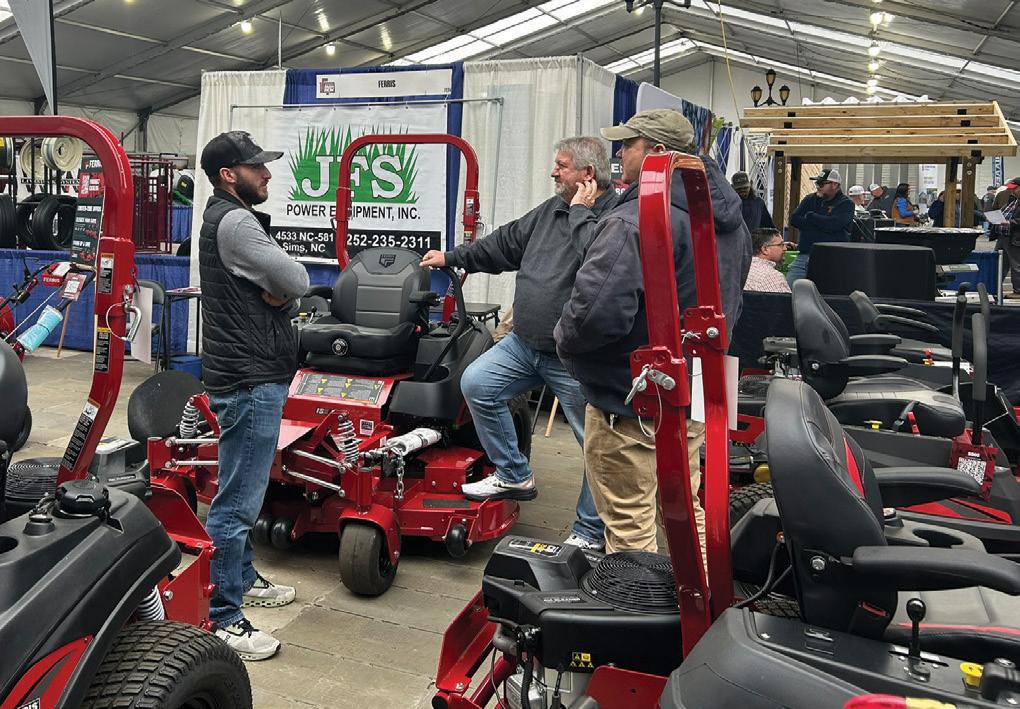
VF
Gravley Greenworks
Country Clipper New Holland
Plus:
Attachments and Trailers
NC Pesticide Continuing Education see website for details
February 4-6
NC State Fairgrounds • Raleigh
FREE ADMISSION • FREE PARKING
9am to 4pm Wednesday and Thursday 9am to 3pm Friday


By Jodi Songer Driedger, Director of Undergraduate Programs — Horticultural Science North Carolina State University
The sweltering North Carolina July heat was no match for a group of 14 dedicated high school agriculture teachers who recently traded their classrooms for a construction site to learn the finer points of patio installation. The mission? To build a 12-foot-by-12-foot concrete paver patio complete with a half-wall, all while learning from leaders in the hardscaping and green industries.
Under a spacious tent with four fans working overtime, these educators from across the state rolled up their sleeves for an intensive, hands-on workshop. The collaborative effort was a powerful demonstration of how industry and education can come together, with materials and expertise provided by three key players: Belgard (a hardscapes manufacturer), SiteOne Landscape Supply (a green industry supplier) and Techniseal (a hardscape accessory company).
For a full eight hours, the teachers worked as a team to transform a raw piece of ground into a beautiful, functional hardscape. They learned about every step of the process, from

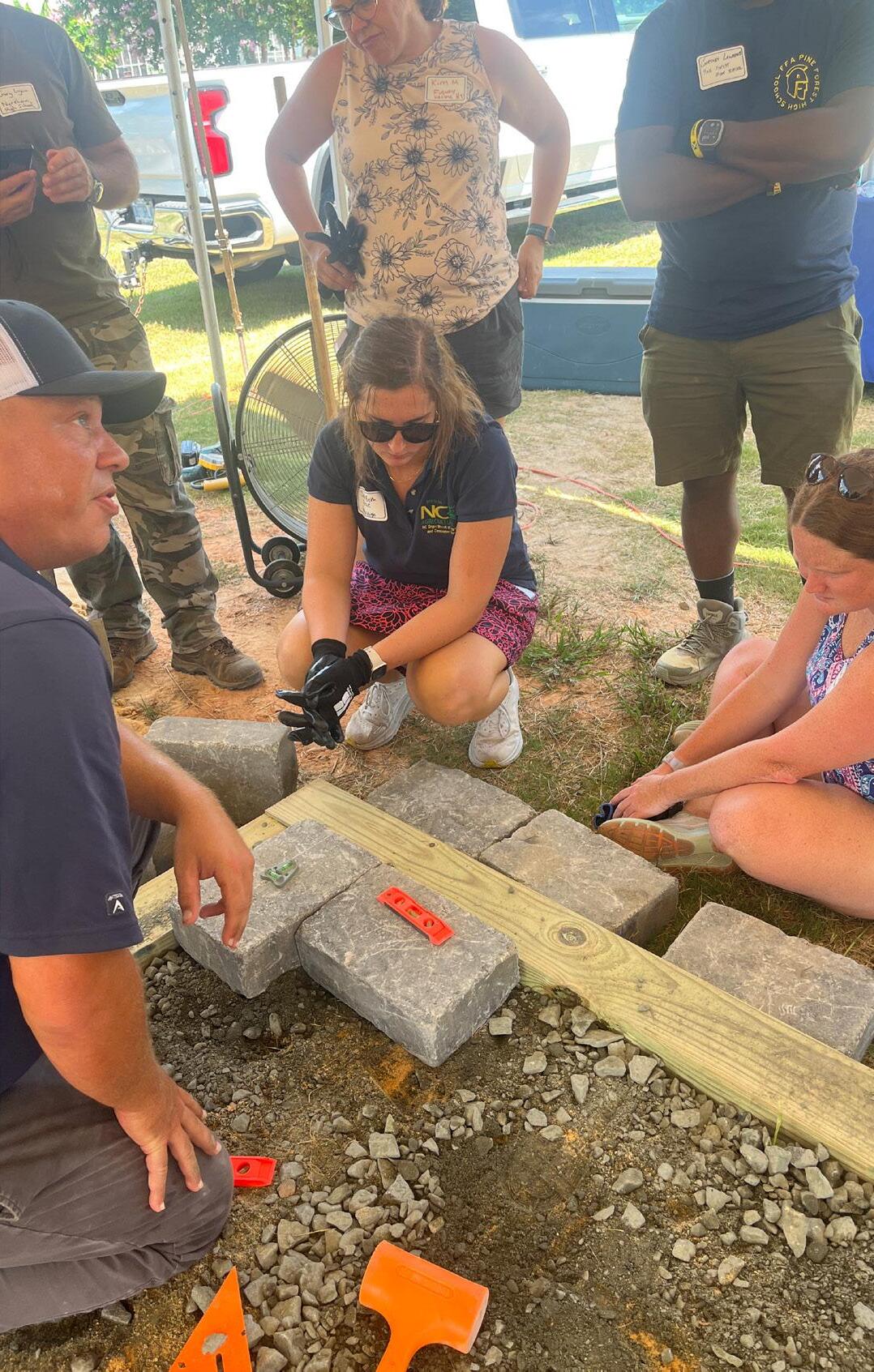
preparing the subgrade and laying the base to cutting pavers and applying the final touches of polymeric sand. The project wasn’t just about building a patio, though — it was a deep dive into the practical applications of and career opportunities within the green industry. The instructors from Belgard, SiteOne and Techniseal provided a comprehensive look at the hardscape industry as a whole, sharing valuable insights that go far beyond what can be found in a textbook.
Belgard provided the project design and all the necessary pavers, walls and tools, while SiteOne supplied the critical base
materials. Techniseal ensured that the final product would endure by donating their specialty polymeric sand, which locks the pavers in place. The best part? Everything was donated — given with a purpose. The three companies hope that this experience will ignite a passion for the green industry in these teachers, who in turn will share their newfound knowledge with thousands of high school students throughout North Carolina.
Each teacher left the workshop with new skills and a full list of materials used, empowering them to replicate the project back at their own schools. This means that soon, students across the state will get the chance to learn about site preparation, proper drainage and professional installation techniques — skills that are in high demand and can lead to rewarding careers.
The one-day event was a perfect example of how hands-on learning, supported by industry partnerships, can make a real difference. The project bridged the gap between theoretical
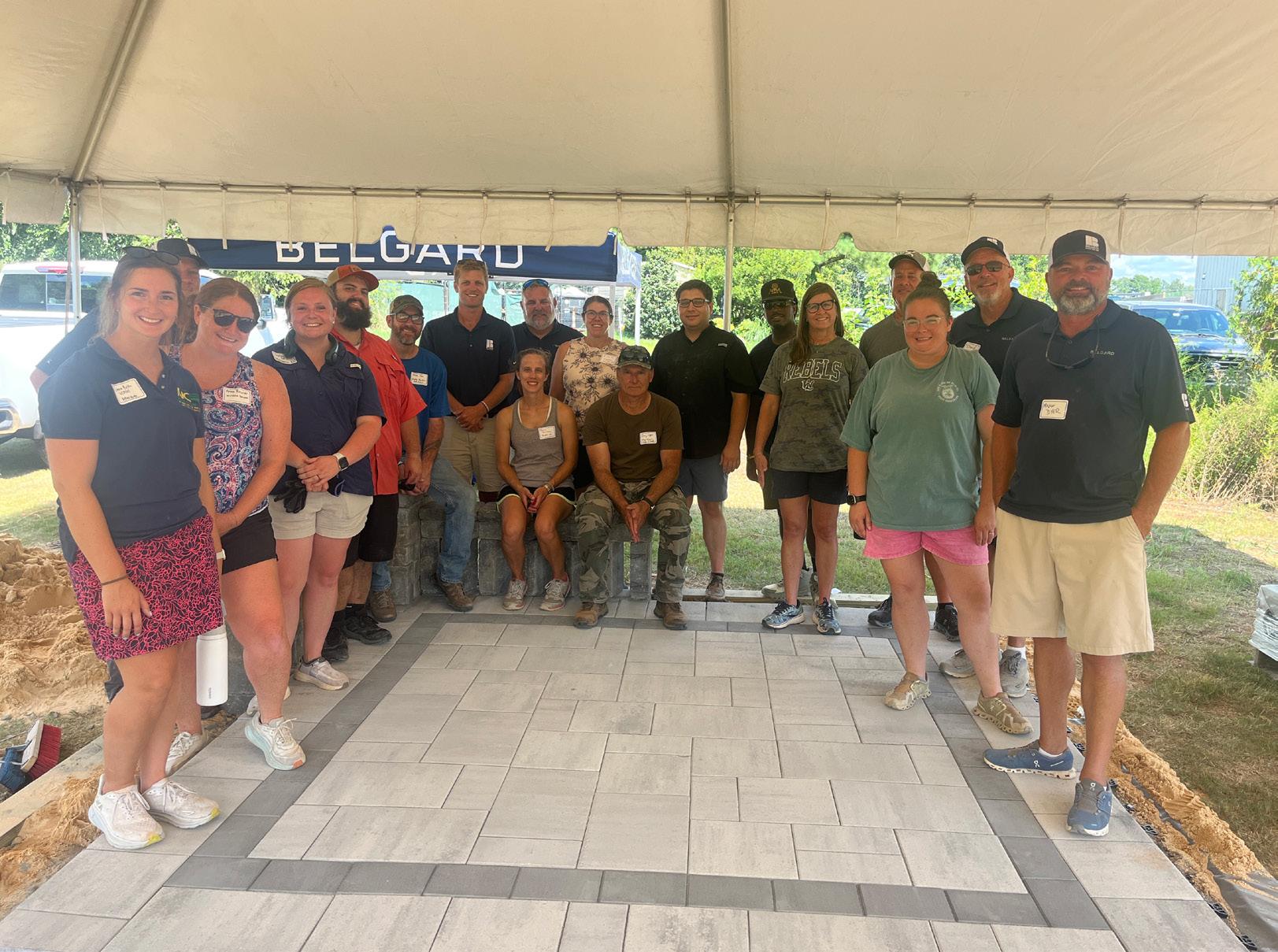
knowledge and practical application, providing an opportunity for teachers ultimately to show North Carolina’s future workforce that the green industry offers innovative and exciting career paths. This kind of partnership is a win-win: Teachers gain valuable skills to
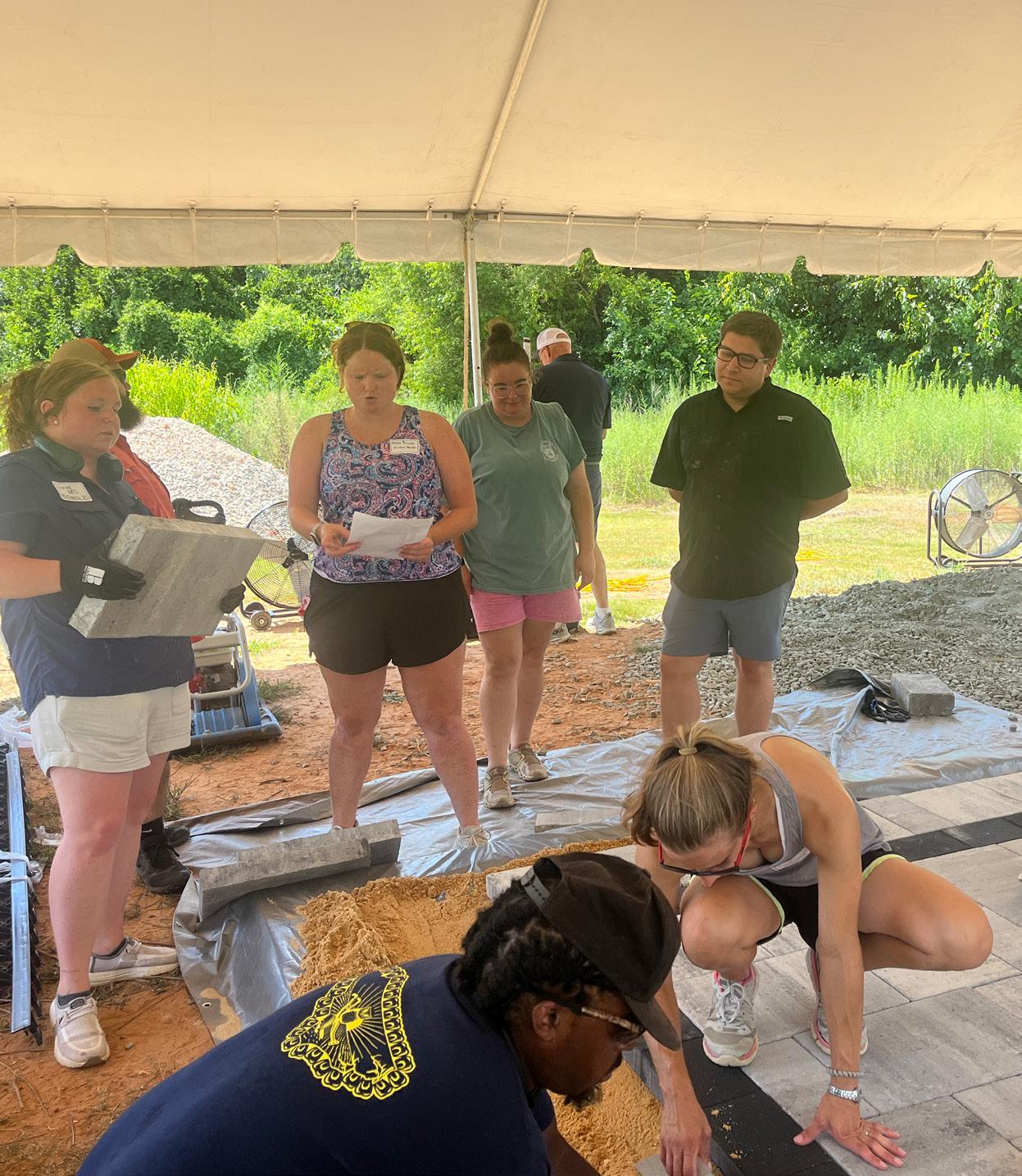
share with their students, and companies like Belgard, SiteOne and Techniseal get to invest in the next generation of landscape professionals. And thanks to such efforts, the future of the green industry in North Carolina is growing more solid, one paver at a time.

Thursday, January 22, 2026 4:30 p.m. – 6:00 p.m.


As we progress through the fall season, the North Carolina Irrigation Contractors’ Licensing Board (NCICLB) is pleased to provide an update on several key developments and important reminders.
On the regulatory front, the NCICLB is celebrating early successes with its new licensing examination. Since the introduction of the new exam, we have seen a significant increase in the number of applications received and, encouragingly, a higher rate of candidates who successfully pass the exam. This positive trend indicates that the updated exam effectively evaluates the competencies of new applicants, while streamlining the path to licensure.
With the final quarter of 2025 upon us, the NCICLB urges all licensed contractors to pay close attention to several administrative requirements to maintain their good standing.
1. 2026 renewals are fast approaching: The deadline for 2026 license renewals is less than three months away! All individual and corporate licenses must be renewed by December 31, 2025, to remain active. Procrastination could lead to significant issues, so plan accordingly.

2. Fulfill your continuing education (CE) requirements: Before renewing, individual licensees must obtain a total of 10 hours of CE, including six hours in irrigation-related topics and four hours in business-related subjects. If you have not yet completed your CE requirements for 2025, visit the NCICLB website today to view available courses and book your classes.
Don’t forget about Education through Experience! We would like to remind individual licensees of the valuable Education through Experience CE opportunity, a program that allows you to claim up to three hours of CE credit for completing eligible irrigation work throughout the year. This is a practical way to earn credit for the hands-on experience you gain daily.
3. Verify that your surety bond is up to date: Maintaining a $10,000 surety bond is a non-negotiable requirement for licensure in North Carolina. The NCICLB reminds all contractors to immediately check the status of their surety bond. Contractors who lose their bond and fail to replace or reinstate it promptly are in danger of license revocation. Please ensure that your bond is current and notify NCICLB administration immediately of any changes to its status.
Finally, the NCICLB is actively seeking dedicated individuals to assist with investigating complaints. These roles are essential for upholding the integrity of licensing and ensuring fair practice within the industry. It is crucial to note that investigators may NOT be licensed by the NCICLB and should NOT currently be working within the irrigation industry. If you know someone who possesses strong investigative skills and an interest in assisting with enforcing the licensing law, please encourage them to contact NCICLB administration. By staying informed, fulfilling obligations and engaging with the NCICLB as needed, contractors can help ensure a smooth end to 2025 and a strong start to 2026.
Green & Growin’ is more than a conference. It’s where our industry comes together, connects, and celebrates what we have built. This year, take that spirit with you. NCNLA branded apparel lets you show your pride, share your connection, and stand out as part of a thriving community.
Don’t wait! Scan QR code to order today and be ready for Green & Growin’ 26!






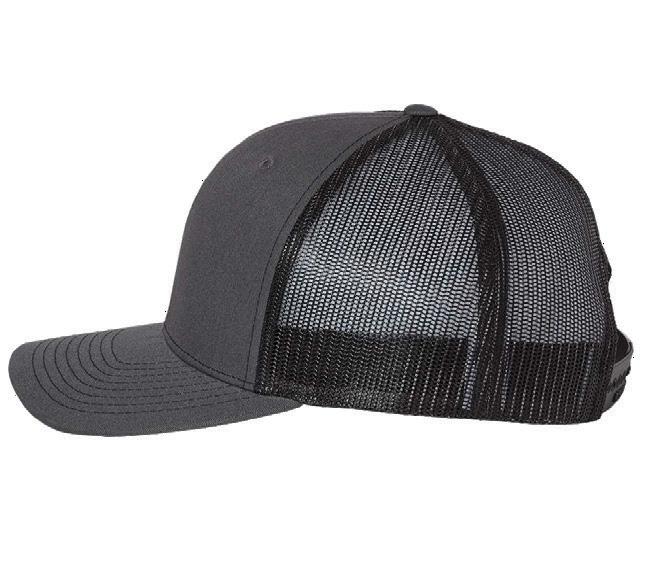

By Barbara Geiger Board Administrator North Carolina Board of Landscape Architecture
When people hear the phrase “landscape architecture,” they often picture plants, flowerbeds or maybe a patio. While those elements are certainly relevant to the profession, the scope of a landscape architect’s job is actually much broader. For those in the green industry — whether you grow, install, design or maintain landscapes — it’s helpful to understand how landscape architecture fits into the larger picture. After all, you’re often working side by side, each bringing unique expertise to create places where people and nature thrive together.
A Licensed Profession, Part of a Bigger Industry
Landscape architecture is a licensed design profession in North Carolina, regulated by the North Carolina Board of Landscape Architects. Becoming a licensed landscape architect requires earning an accredited degree, gaining professional experience and passing a national exam. This rigorous process ensures that landscape architects are qualified to take responsibility for certain types of plans and projects — particularly those tied to public health, safety and welfare.
That said, licensure is just one path in the green industry. Landscape contractors, nursery professionals, irrigation contractors, designers and maintenance experts all bring indispensable skills that make projects successful. Without high-quality plant material, expert installation and long-term care, even the best design on paper won’t thrive. The industry works best when everyone — licensed or not — collaborates as partners.
Landscape Architects Do
The scope of landscape architecture is wide-ranging. Some examples include:
• Site planning and development: Integrating grading, stormwater, circulation and planting for residential communities, campuses and commercial sites.
• Public spaces: Designing parks, plazas, greenways and playgrounds — places that become community touchstones.
• Infrastructure: Creating streetscapes and transportation corridors that balance safety, mobility and beauty.

• Environmental work: Restoring wetlands, rehabilitating streams and managing stormwater with green infrastructure.
• Specialty facilities: Crafting outdoor spaces for hospitals, schools, and cultural sites like zoos and botanical gardens.
Many of these projects call for licensed plans or sealed drawings, but they also depend heavily on the knowledge and craftsmanship of other green-industry professionals. Landscape architects may set the vision, but it’s growers, contractors and maintenance teams who bring that vision to life and keep it flourishing.
North Carolina is fortunate to have two strong academic programs (one undergraduate, one graduate) that prepare future landscape architects, each serving an important role in developing talent for our state and beyond.
North Carolina A&T State University (N.C. A&T) is home to the state’s undergraduate Bachelor of Science in Landscape Architecture program within its Department of Natural Resources and Environmental Design.
• This program is accredited by the Landscape Architectural Accreditation Board (LAAB), therefore graduates are eligible to pursue licensure nationwide.
• The program emphasizes creative and critical thinking, technical skills, ethical practice, and community service-oriented design, with a special focus on historically underserved communities.
• N.C. A&T has graduated more African American landscape architects than any other accredited degree program in the U.S.
• Recent graduating classes have celebrated 100% employment before graduation, demonstrating the strong demand for the program’s graduates.
• This program enriches the profession by preparing students with a deep understanding of both ecological design and community needs.
At the graduate level, North Carolina State University’s (NC State) College of Design offers a Master of Landscape Architecture degree, which is also fully LAAB-accredited.
• NC State’s faculty and alumni have influenced major projects across North Carolina, from urban parks and campus landscapes to large-scale planning initiatives.
• This program is recognized nationally for its emphasis on design innovation, interdisciplinary collaboration and research-driven practice.
• Students tackle complex issues like climate resilience, urbanization and ecological restoration, preparing them for leadership roles in the profession.
• The program attracts students from across the U.S. and internationally, helping to position North Carolina as a hub for design excellence.
Together, N.C. A&T and NC State create a pipeline of talent on both the undergraduate and graduate levels to help ensure that the profession remains vibrant, diverse and equipped to meet tomorrow’s challenges.

• The Biltmore Estate is one of Frederick Law Olmsted’s most famous projects.
• N.C. A&T’s undergraduate program has graduated more African American landscape architects than any other accredited program in the U.S.
• NC State’s graduate program is recognized nationally for design innovation and research in climate resilience and urban design.
• The NC Board of Landscape Architects was established in 1969 to regulate licensure and professional standards.
• Many of the profession’s most impactful projects — parks, greenways and restoration work — are built and maintained in partnership with contractors, nurseries and other green-industry experts.

1. Site planners: Shaping the layout of communities, campuses and developments.
2. Public space designers: Creating parks, plazas and greenways that bring people together.
3. Infrastructure integrators: Blending transportation, streetscapes and utilities with the landscape.
4. Environmental stewards: Restoring ecosystems, managing stormwater and protecting resources.
5. Collaborative partners: Working with contractors, nurseries and maintenance experts to make designs thrive.
Our state has a proud history in landscape architecture. The Biltmore Estate in Asheville, designed by Frederick Law Olmsted in the late 1800s, is one of the profession’s seminal works. Today, firms based here continue to shape parks, campuses and civic spaces across the Southeast.
And importantly, this legacy is sustained not just by licensed landscape architects, but also by the nurseries that supply resilient plant material, the contractors who build these places and the maintenance professionals who keep them thriving.
North Carolina’s green industry has always thrived on partnership. By understanding each other’s roles, we can strengthen partnerships and demonstrate the full value of the industry. And together, we can create landscapes that are functional, beautiful and enduring.
Landscape architects — and the industry as a whole — are tackling some of today’s biggest challenges:
• Urban growth: Designing livable, walkable communities as our cities expand.
• Climate resilience: Reducing flooding and extreme heat with green infrastructure.
• Public health: Creating outdoor spaces that promote physical activity, mental health and community.
• Environmental stewardship: Protecting biodiversity and improving water quality through thoughtful design and management.
These challenges create opportunities for collaboration across the industry. The expertise of nursery growers, contractors and maintenance professionals is essential to making sustainable design work on the ground.
So, what is landscape architecture, anyway? It’s one part of a larger green-industry ecosystem. And yes, it’s about shaping spaces with design and science — but it’s also about teamwork, collaboration and respect for the many professionals who make our landscapes possible. In North Carolina, we’re fortunate to have a proud history, two strong academic programs at N.C. A&T and NC State, and an even stronger network of practitioners working together to build outdoor environments that serve both people and the land.
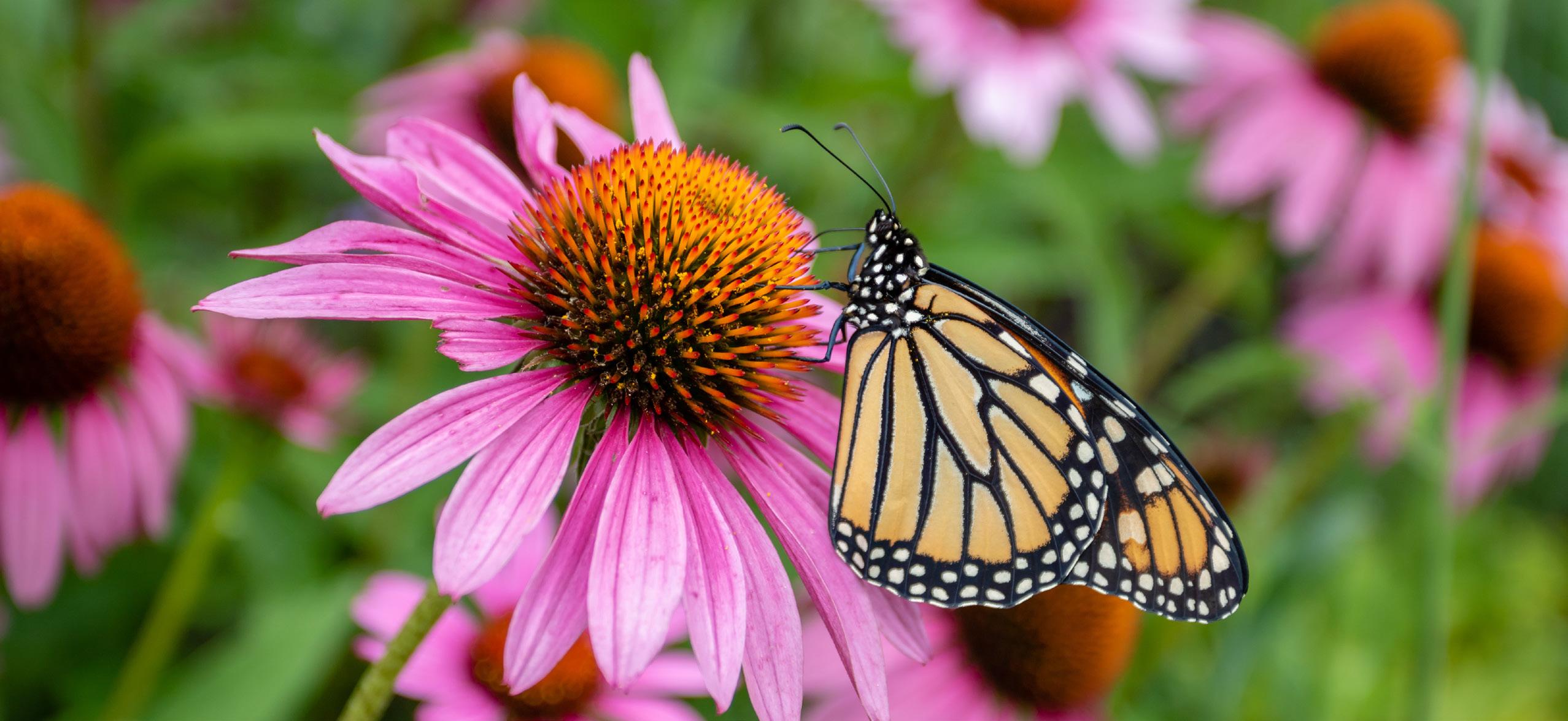
Yes, they can!
Chemical pest control, which can be damaging to the environment and cost-prohibitive for large infestations, isn’t always the right solution.
One alternative is to introduce beneficial insects into the landscape, provided you create the right environment for them to thrive. Maintaining healthy populations of beneficial insects should be a major concern, since it impacts the entire ecosystem within a yard, garden or landscape. Insects and plants work together to cycle nutrients, pollinate plants and maintain soil quality, and when populations of beneficial insects decline, the resulting imbalance can lead to damaged greenery, repairs, replanting and more. Helping beneficial insects thrive while keeping unwanted pests in check ultimately translates to less maintenance work and a healthier green space.
While it isn’t always easy to just look at an insect and decide whether it’s a pest or a beneficial addition to the landscape, educating your customers on the differences between pollinators, decomposers and harmful pests is an essential skill.
Some of the most beneficial lawn and garden insects include:
• Lady beetles
• Spiders
• Braconid wasps
• Green lacewings
• Ground beetles
• Hoverflies
• Praying mantises
• Soldier beetles
These beneficial insects pray on pests like mosquitoes, aphids, lawngrubs, moths and others, helping to keep populations low.
Provide shelter!
Like all animals, beneficial insects need shelter, and the best garden materials for this are mulch and pine straw. In addition to helping plants retain moisture and stay healthy, mulch and pine straw provide hiding places for beneficial insects and warm spaces for them to hunker down over the winter — so be sure to replenish these resources when needed.
Mulch is also beneficial to the landscape, deterring some invasive insect species and preventing weed growth. Cypress and cedar mulch, for example, release natural oils that repel insects like termites, cockroaches and certain types of ants. Should a vegetable garden be part of the landscape, straw mulch is excellent at keeping certain types of insects, such as cucumber beetles, away from certain types of vegetable plants. Straw mulch also helps reduce the spread of fungus, lowering the risk for plant rot.

Diversify the landscape!
Attracting beneficial insects while controlling pest populations becomes easier by creating a diversified landscape. Landscapes with limited plant selections often have bigger pest problems, simply due to the lack of variety in plant life.
Diversification can come both from differing plant species and varying plant sizes. The greater the variety in both aspects, the more natural enemies to pest populations will be attracted to help keep infestations in check. Adequate differentiation in plant size may also create a microclimate within the landscape space, giving beneficial insects protection from harsh weather and their own natural enemies.
Additionally, certain flowering plants serve as food for beneficial insects, helping to keep their populations strong. Beneficial insects like bees, lady beetles, hover flies and parasitic wasps maintain a strict diet of nectar and pollen. Including the right flowering plants within the landscape will feed both mature adults and larvae. The larvae of beneficial insects also often dine on aphids, caterpillars, cutworms, trips, mites and more, helping to control pests that could harm flowering plants.
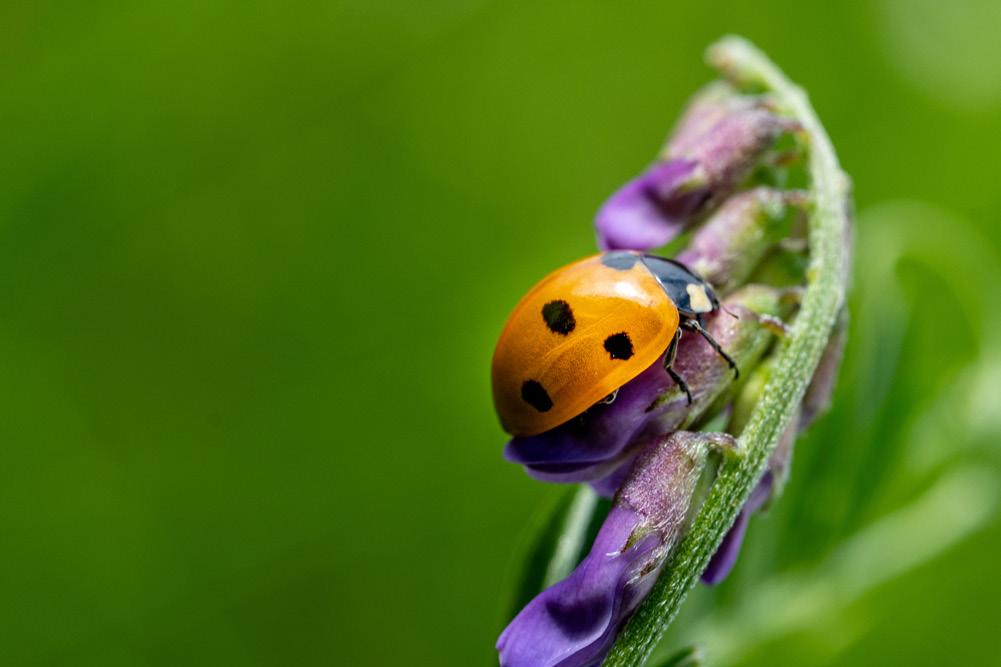
The best flowers for beneficial insects
When recommending flowering plants that are especially attractive to beneficial insects, start with these:
• Blanket flower (Gaillardia spp.) — annual/perennial
• Coneflower (Echinacea purpurea) — perennial
• Tickseed (Coreopsis spp.) — perennial
• Goldenrod (Solidago spp.) — perennial
• Yarrow (Achillea spp.) — perennial
• Milkweed (Asclepias spp.) — perennial
• Joe-Pye weed (Eutrochium spp.) — perennial
• Hairy beardtongue (Penstemon hirsutus) — perennial
• Anise h(Agastache foeniculum) — perennial
Avoid harming beneficial insects
After putting in so much time creating an ideal environment for beneficial insects to thrive in, the last thing you want to do
is accidentally harm these populations. This most often occurs with the use of synthetic chemical insecticides, which can wipe out entire populations of both pests and beneficial insects, leaving plants at risk for future infestations. Overfertilization also can damage the balance beneficial insects bring to the landscape, causing plants high in nitrogen content to grow so quickly that pest populations get too large for beneficial insects to control. This occurs due to the fact that plants high in nitrogen contain more nutrition, and more food generally means more insects of every kind.
Should a pest outbreak occur that you need to address quickly, try using botanical soaps or oils as a natural pest-control solution. Targeting harmful insects with this type of insecticide won’t produce as many harmful side effects for beneficial insects.
No matter how you shape a landscape to ensure that beneficial insects thrive and harmful pests do not, SiteOne associates are available to answer any questions you may have. Check us out today at SiteOne.com and on our mobile app.
*Reprinted with permission. A version of this article first appeared on SiteOne Learn & Explore.



By Kate Loughran
Botany Research Specialist, Plant Conservation Program
NC Department of Agriculture & Consumer Services
The Plant Conservation Program (PCP), part of the NCDA&CS Plant Industry Division, is responsible for the listing and protection of North Carolina’s endangered plants and threatened plant species. Established by passage of the Plant Protection and Conservation Act in 1979, the program maintains the list of Endangered, Threatened, and Special Concern plant species; enforces regulations and issues permits concerning state-listed plant species; and monitors and manages populations of listed plant species. The program also monitors the trade in American ginseng.
The PCP’s mission is to protect and conserve North Carolina’s imperiled native plants in their natural habitats, now and for future generations. To accomplish this mission, the PCP develops regulations, voluntary programs and cooperative partnerships to help protect imperiled species and their habitats. The program also develops conservation programs to help permanently protect these species. The most recent North

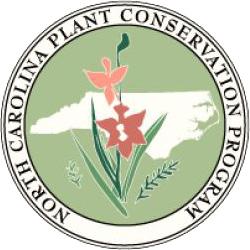

Carolina Protected Plant List contains 462 species with a designation of Endangered, Threatened, Special Concern-Vulnerable or Special Concern-Historical.
In addition to its regulatory responsibilities, the PCP owns 26 dedicated nature preserves across North Carolina. These preserves, which span from the Blue Ridge Mountains to the Coastal Plain, contain incredibly unique and rare plant communities. The acquisition and management of these sites protects native plants and their ecosystems in perpetuity. Other PCP management activities include non-native invasive plant removal, habitat restoration and rare-plant monitoring. While these preserves are closed to the public in order to protect the sensitive nature of these sites, guided tours and volunteer workdays are offered routinely through Friends of Plant Conservation, a nonprofit that directly supports the work of the PCP.
Conservation partnerships with accredited botanical gardens, such as the North Carolina Botanical Garden and Atlanta Botanical Garden, facilitate the reintroduction and augmentation of state- or federally listed plant species at PCP Preserves. These partnerships are critical to ensuring the continuity of these imperiled plants, as well as bolstering and sustaining the biodiversity of our region. Due to the rare nature of these plants and their listed status, documentation of the source material and permitting is required. Protected Plant Permits are issued for research involving the collection of any state- or federally listed species in North Carolina. Certificates of Origin are required for any individual or nursery possessing or propagating listed plants or plant parts.
A recent conservation success between the Atlanta Botanical Garden and the PCP was the reintroduction of the white fringeless orchid (Platanthera integrilabia, Federally Threatened) within one of PCP’s rare mountain bog preserves in Western North Carolina. This orchid species was considered extirpated from the state for more than 30 years, last seen in the wild prior to 1990. This year, the first flowering plant emerged since reintroduction efforts


took place in 2022. Long-term monitoring and evaluation of these reintroductions will help guide management goals for the survivability of this orchid across its range in the United States.
The next reintroduction of a historically occurring plant species in North Carolina is planned for fall 2025. With the support of the North Carolina
Botanical Garden and Atlanta Botanical Garden, the PCP will be reintroducing Canby’s dropwort (Tiedemannia canbyi, Federally Threatened) back to its native Carolina Bay habitat, following extirpation in 2005. With the protection of rare ecosystems, coupled with strong conservation partnerships, we hope to see many more threatened species returning
to their endemic North Carolina niches for years to come.
To learn more about the mission of the Plant Conservation Program, regulations regarding listed plant species and the Plant Conservation Preserves, you can visit https://www.ncagr.gov/divisions/ plant-industry/plant-protection/ plant-conservation-program.
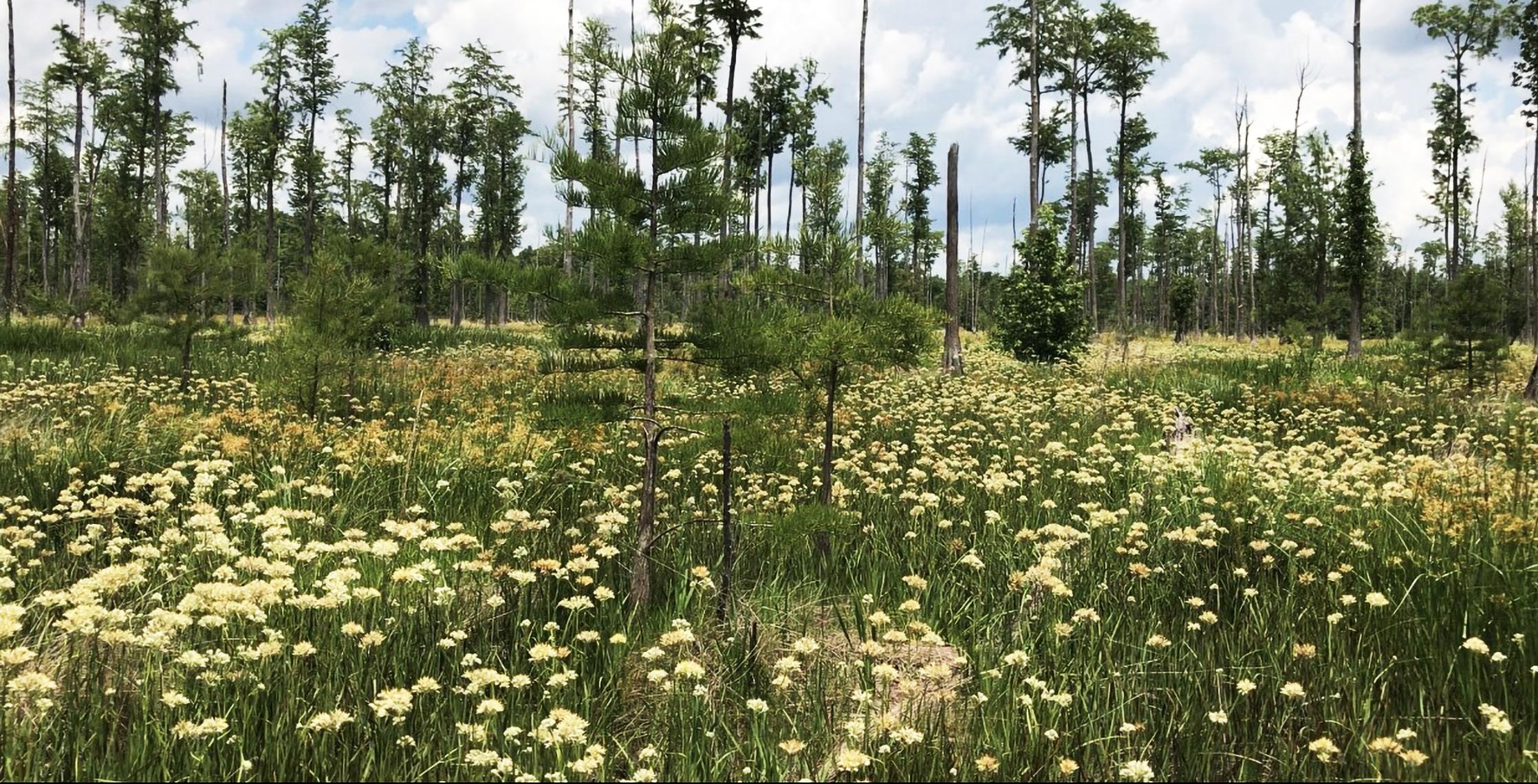

By Dr. Thomas G. Ranney
J.C. Raulston Distinguished Professor Mountain Crop Improvement Lab Dept. of Horticultural Science
NC State University
Human beings have been cultivating, trading, breeding and distributing plants since the dawn of civilization. Plants are part of our culture, spanning generations and geopolitical boundaries. This ongoing domestication of plants has transformed our crops, gardens, food supply and landscapes, enhancing our quality of life in many positive and profound ways.
Most introduced plants have not been problematic. Globally, only about 4% of non-native species have naturalized. Of course, the presence and naturalization of a non-native species is not necessarily a problem — many introduced plants provide positive ecosystem services such as erosion control, reduced stormwater runoff, pollinator services, wildlife food and habitat, and enhanced biodiversity — particularly in urban and disturbed environments. However, in very limited cases, some non-native species can get out of hand and have negative impacts on ecosystem processes, native community composition and ecology. So, how can we address the few bad actors?
More careful screening to avoid the introduction of species with invasive properties is certainly important. In other cases, where valuable nursery crops are problematic and weedy, the development of low-fertility/seedless cultivars can be an ideal alternative. This problem-solving approach preserves the economic, ecological and aesthetic value of these plants, while minimizing potential negative impacts associated with unintended spread. Other benefits of reduced-fertility introductions can include enhanced flowering and re-blooming, reduced fruit litter, and reduced pollen allergens.
Despite the potential of reduced-fertility cultivars, the absence of a clear framework for their development and evaluation has hindered consistent adoption and policy alignment. Recently, Dr. Ryan Contreras and I led a national effort and working group to develop a consensus and to review approaches for developing and evaluating low-fertility landscape cultivars to minimize self-sowing and potential invasiveness (Contreras, et al., 2025). Specific recommendations and conclusions from this paper included the following:
1. Selecting and developing cultivars with reduced fertility is a viable approach for maintaining economic, environmental and aesthetic benefits of important landscape crops while minimizing potential invasiveness.
2. A 98% reduction in fertility, compared to fertile controls, is an achievable and practical criterion for accepting low-fertility cultivars as alternatives to potentially invasive, sexually reproducing plants.
3. Regulations of potentially invasive plants should include exclusions and provisions to allow for the continued production of cultivars with documented low reproductive fertility.
We hope that this paper and effort will help inform decision-makers across the country on the adoption of uniform guidelines and policies that allow for the further development and cultivation of these improved, problem-solving crops.
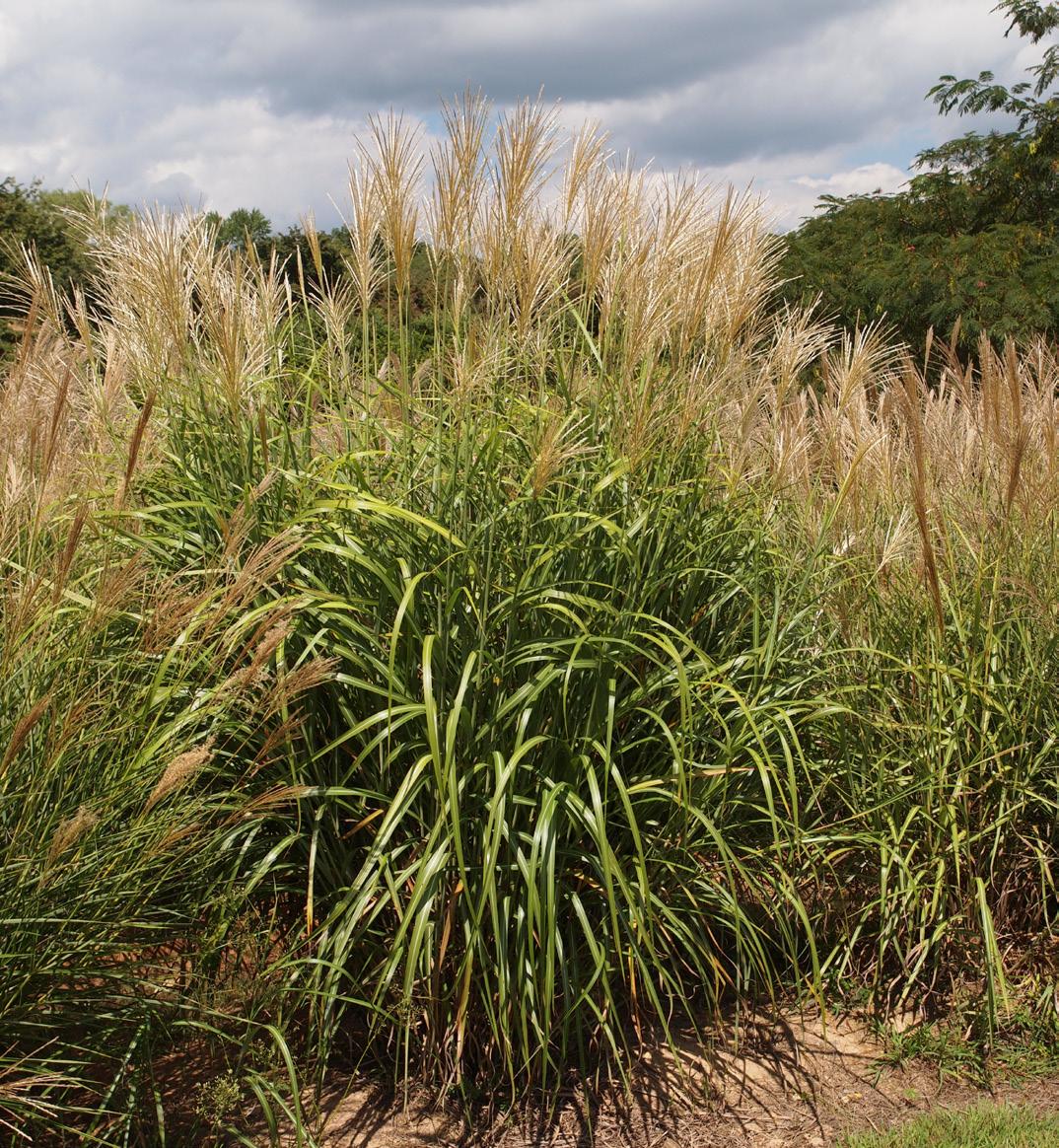

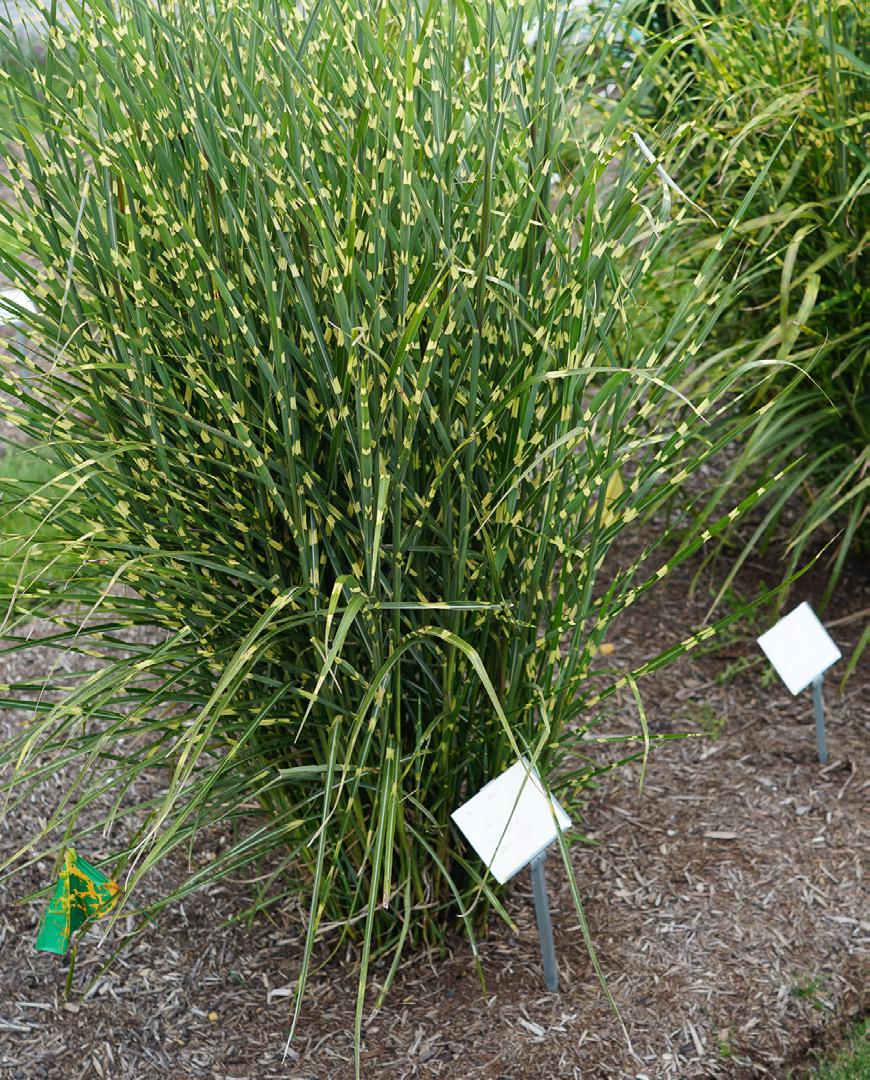

Closer to home, our team here at North Carolina State University’s Mountain Crop Improvement Lab has been working for decades on developing seedless forms of important, although sometimes weedy, nursery crops. These seedless selections have been developed specifically for low reproductive fertility to minimize self-sowing and potential invasiveness. These plants may be triploid or have other mechanisms whereby seed production is greatly reduced or rare, but not necessarily zero. A few of these cultivars are described below.
Maiden Grass (Miscanthus sinensis). Native to the mountains of Japan, Maiden Grass has found a good home in the mountains of Western North Carolina and other parts of the country, where it has naturalized along roadsides, old fields and disturbed sites. As a pioneer species that is relatively shade-intolerant, Maiden Grass tends to fade out with natural succession, but thrives in areas like roadsides where periodic mowing suppresses competition. We have developed and introduced three triploid cultivars of Maiden Grass that were bred to have low fertility and a combination of desirable ornamental features. My Fair Maiden™ Maiden Grass (Miscanthus sinensis ‘NCMS1’ USPP26387P3) is big and bold with showy flowers, reaching 7-9 feet high (Fig. 1). High Frequency™ Maiden Grass (Miscanthus sinensis ‘NCMS3’ USPP34712P2) is more compact, reaching 6-7 feet tall, with attractive horizontal banding (Fig. 2). Bandwidth™ (Miscanthus sinensis ‘NCMS2B’ USPP29460P2) is the shortest of the bunch, coming in at under 3 feet high with horizontal banding (Fig. 3).
Barberry (Berberis spp.). Fertile barberry have become a problem in some U.S. regions, particularly the Northeast and Midwest. Yet they are adaptable, deer-resistant plants with a range of desirable ornamental traits, including colorful foliage and unique forms. We have developed two highly infertile Barberry cultivars. Sunjoy Mini Maroon® (Berberis thunbergii ’NCBT1’ USPP30330P3) has deep red/maroon foliage with a compact habit, similar to ‘Concord’, ultimately reaching 2-3 feet in height (Fig. 4). Sunjoy Todo® (Berberis ’NCBX1’ USPP29504P3) also has great purple foliage color but is even smaller than Mini Maroon®, maturing at 1.5-2 feet tall (Fig. 5).
Scented Silverleaf (Elaeagnus ×ebbingei ’NCEX1’
Mr. Smooth™ PPAF). Imagine a refined plant sporting shimmering evergreen foliage and subtle flowers with a pungent, enchanting fragrance. Oh, and one that is tough,
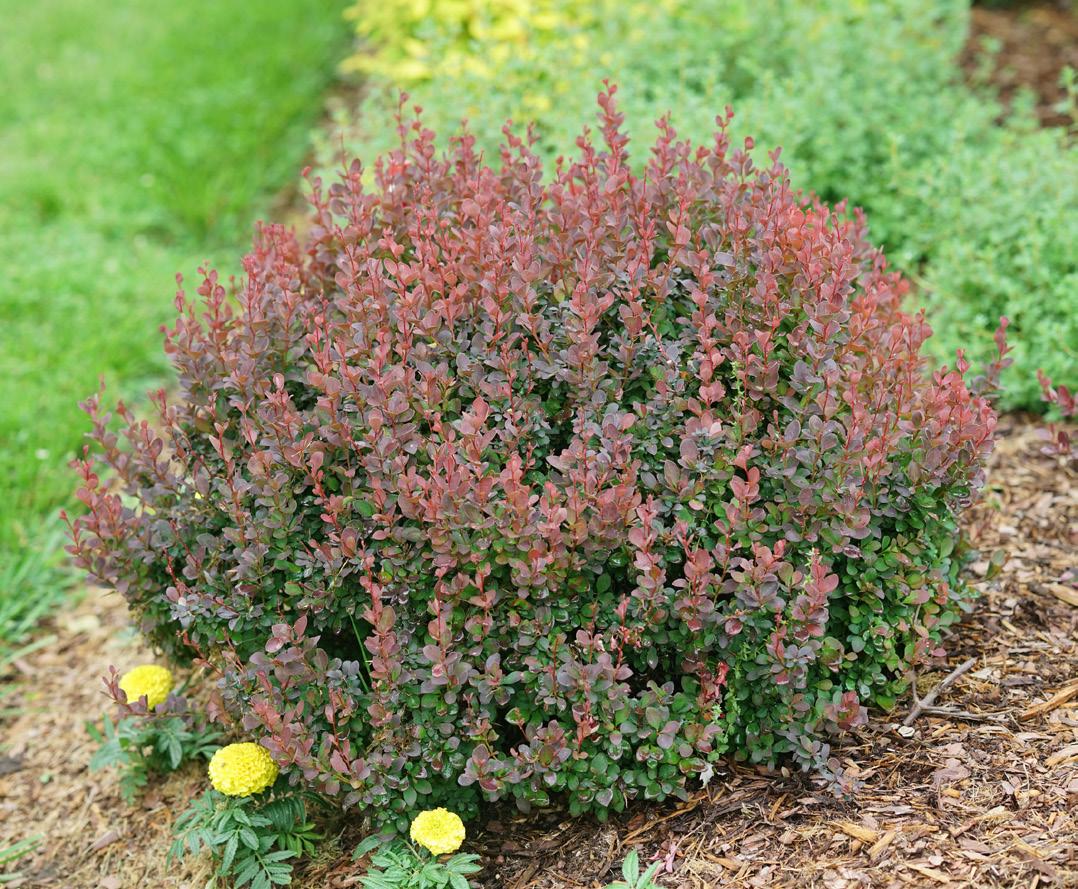
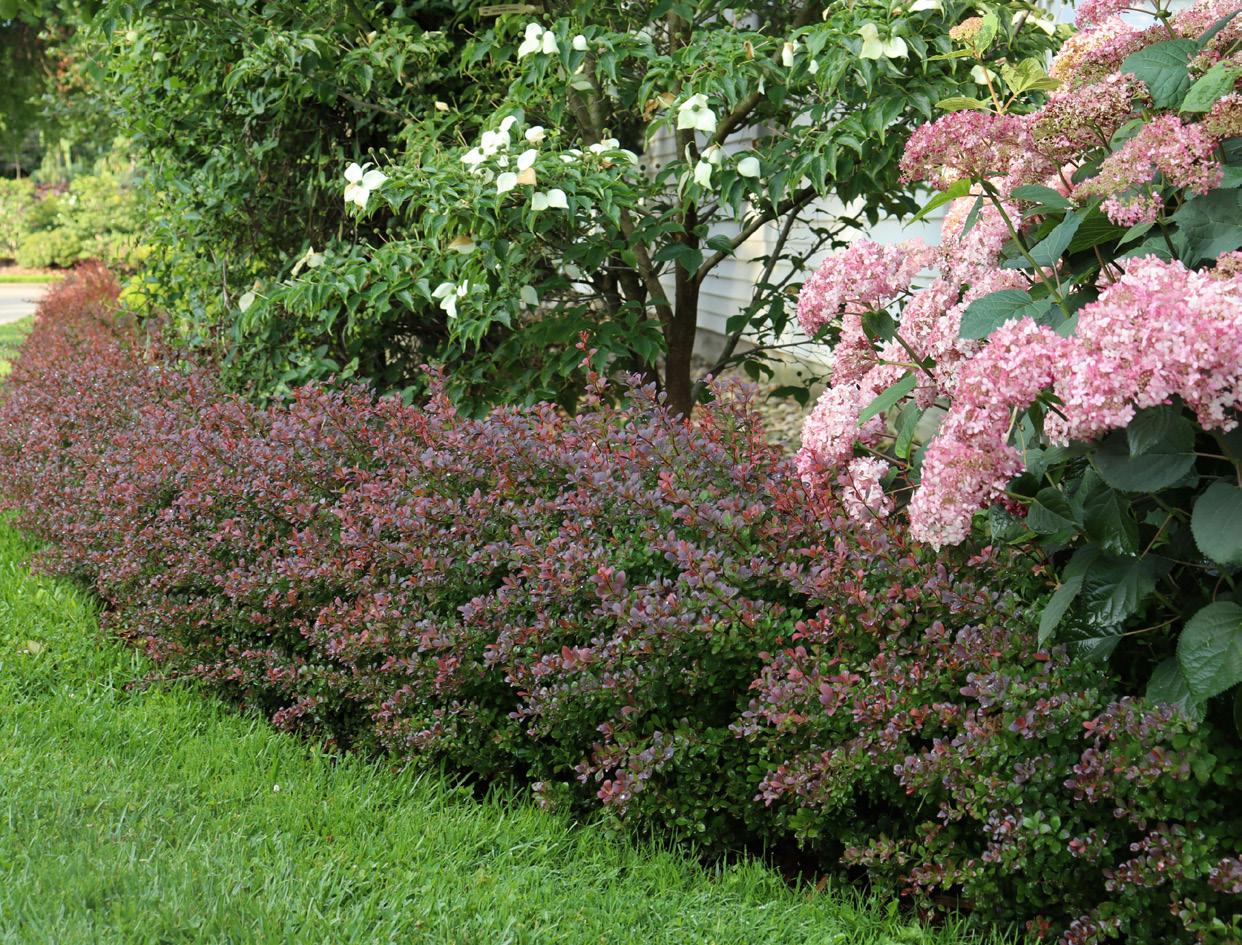
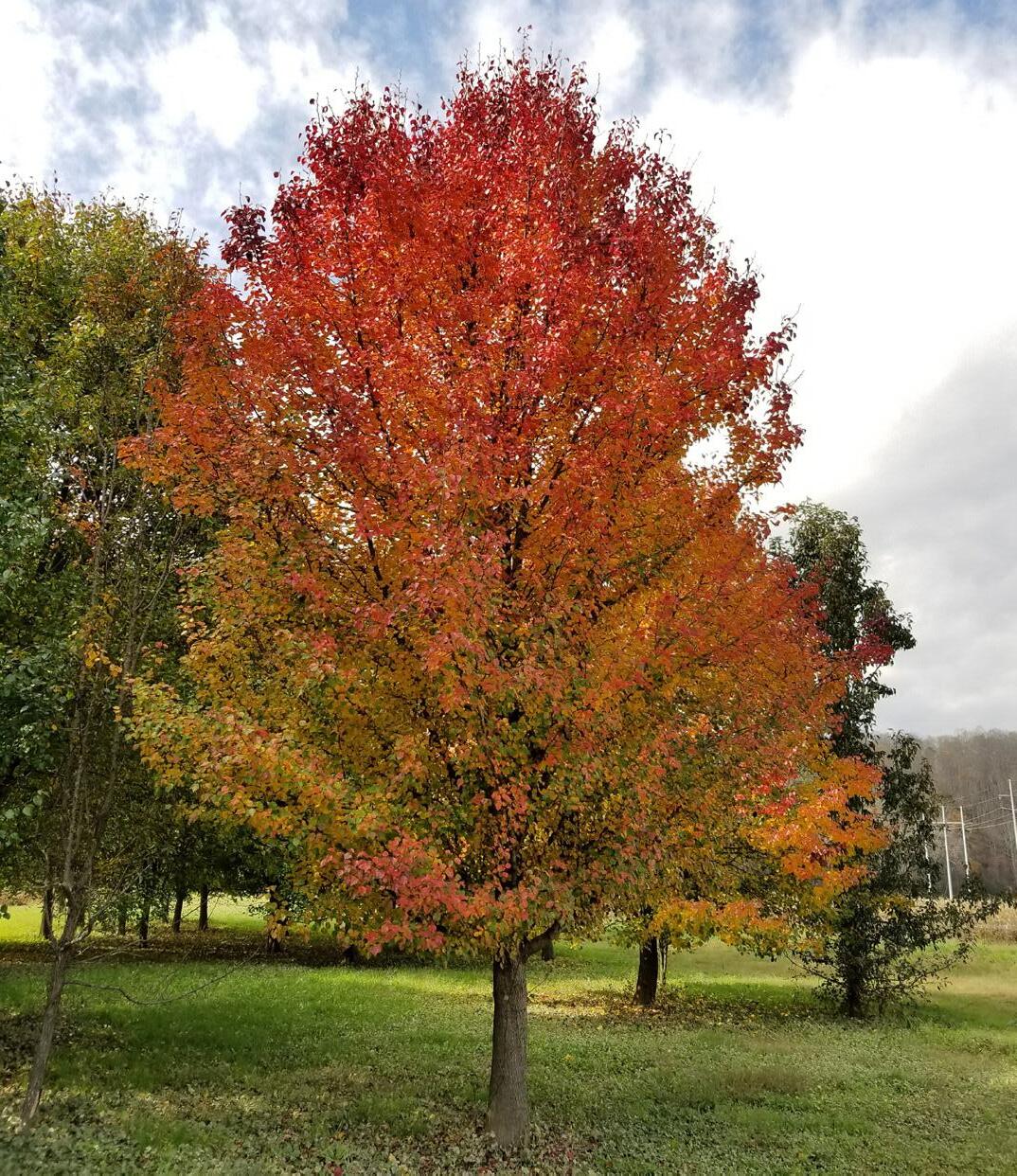

adaptable, salt-tolerant and deer-resistant; roots from cuttings; and fixes its own nitrogen! Yes, it’s an Elaeagnus, but unlike other Elaeagnus you may know, we made some improvements to this one. Mr. Smooth™ is thornless and compact (it doesn’t throw errant “rat tail” shoots), and is also a seedless triploid. We kept all the good stuff, fixed some of the problems, and selected the new common name of “Scented Silverleaf” to better reflect its desirable traits (Fig. 6).
Flowering Pears (Pyrus spp.). Callery pears (P. calleryana) became popular for a reason. In 1964, The New York Times published an article stating that “Few trees possess every desired
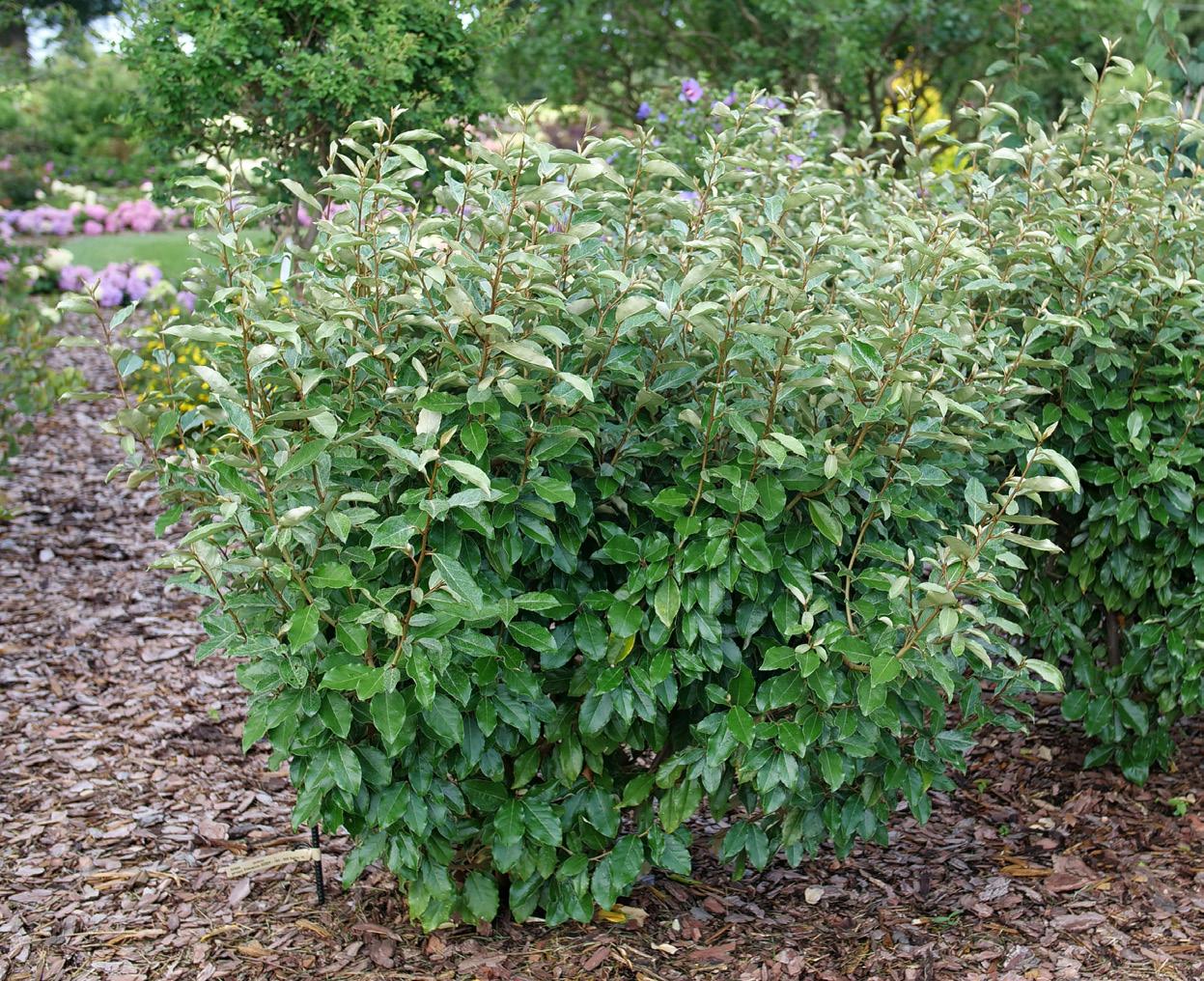
attribute, but the Bradford ornamental pear comes unusually close to the ideal” (Dengler). True, it’s tough and adaptable, is particularly pest-resistant, and has showy flowers and spectacular fall color. Unfortunately, Callery pears have become infamously weedy. In response, we set out to develop an improved noninvasive pear hybrid. Chastity™ Flowering Pear (Pyrus ×triploida ‘NCPX2’ USPP30788P2) is a complex triploid hybrid involving P. calleryana, P. betulaefolia, and P. fauriei. It is highly resistant to fire blight, highly infertile, with showy flowers and fall color, has good branch structure and an upright, pyramidal form — so it features lots of improvements, in addition to low fertility (Fig. 7). We gave it the new hybrid name of Pyrus ×triploida to differentiate it from fertile types of Callery pear. Although Chastity™ is a great plant, we may have gotten to the game too late, as ornamental pears in general are now being broadly villainized, and the general public may not recognize the difference between the good and the bad.
Japanese Spiraea (Spiraea japonica). Spiraea are extremely popular landscape plants valued for their broad adaptability and bright flowers and foliage. Here in Western North Carolina, I occasionally see Spiraea naturalized along roadsides and under power lines, but rarely in the woods. In some locations, particularly in the Northeastern U.S., Japanese Spiraea has been flagged by some as an emerging invasive species. To mitigate this risk and gain some of the valuable ornamental characteristics connected to reduced fertility, our program focused on developing improved seedless triploid forms of Spiraea. Thus far, we have developed and introduced two selections. Doubleplay® Candy Corn® Japanese Spiraea (Spiraea japonica ’NCSX1’ USPP28313P2) is very compact (1.5-2.5 feet high and wide) and crazy colorful (Fig. 8). In the spring, the new foliage emerges a candy apple red and transitions to a pineapple yellow, topped off with dark purple flowers. If you’re looking for eye-popping color, look no further! Doubleplay® Doozie® Japanese Spiraea
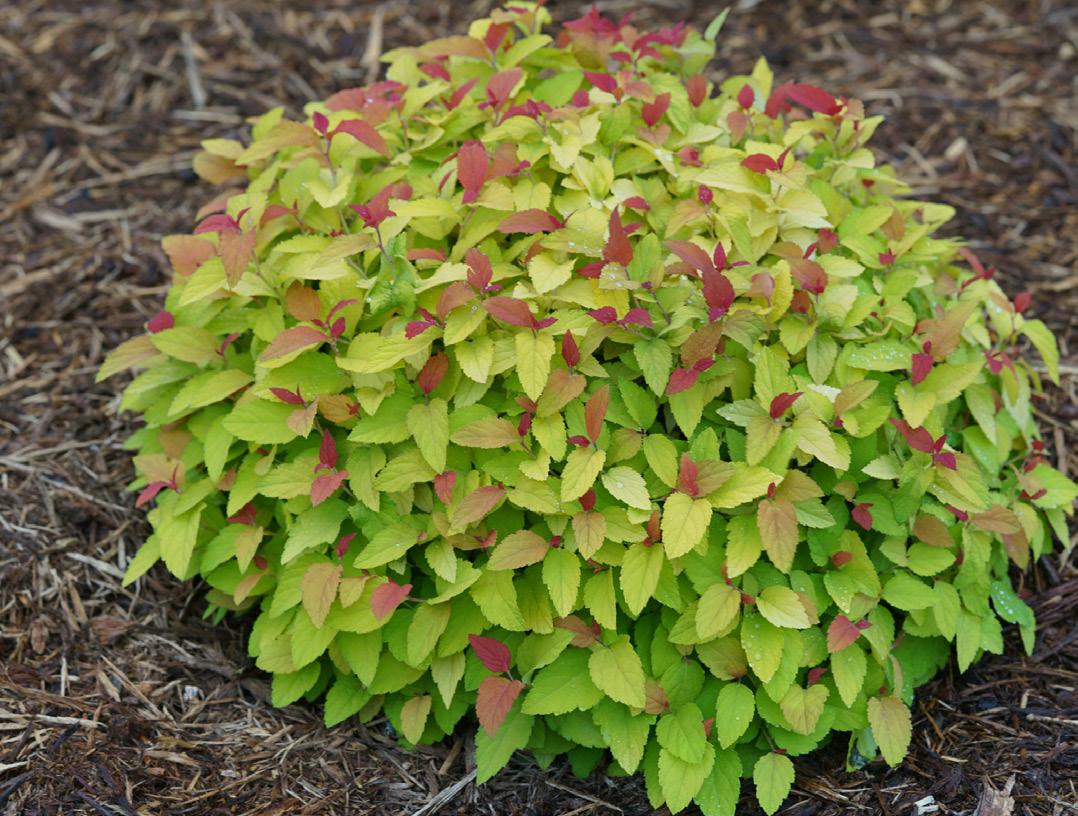

(Spiraea japonica ’NCSX2’ US20190281743P1) is a completely different animal. Doozie® is a medium-sized shrub (2-3 feet high and wide). New foliage emerges purplish red and matures to dark green, accompanied by saturated red flowers (Fig. 9). What came as a surprise is that the lack of seed production appears to make Doozie® a continuous bloomer. As long as it’s growing, it’s flowering — no deadheading or pruning required.
The list goes on. Other seedless introductions from our lab include: ‘Chastity’ Trumpet Vine (Campsis ×tagliabuana), the Double Take® Flowering Quince (Chaenoemeles speciosa ’Scarlet Storm’ USPP20951P2; ’Orange Storm’ USPP20950P2; and Peach ’NCCS4’ USPP30231P3), Kindly® Japanese Privet (Ligustrum japonicum ’NCLJ1’ USPP35881P2), Golden Ticket® Privet (Ligustrum ’NCLX1’ US20160029531P1), and Fire Ball Seedless® Burning Bush (Euonymus alatus ’NCEA1’ PPAF). For more information on these plants, check out https://mcilab.cals.ncsu.edu/plant-introductions/.
Developing seedless plants is not particularly easy or fast — many of these projects have taken decades to complete. However, as an industry, we recognize the importance of addressing this issue. At NC State, while we continue to utilize traditional breeding techniques to develop noninvasive varieties, we are also

exploring new biotechnologies to expedite the process. Gene-editing approaches, such as CRISPR-Cas9, have the potential to precisely suppress key genes essential for plant reproduction, rendering plants seedless. This approach would enable us to take existing, elite cultivars and simply turn off reproduction without making any other changes. Initially, we are testing this approach on different grasses. If this works, it will be game-changing!
Special thanks to Nathan Lynch, Irene Palmer, Andra Nus, John Nix, and the staff at the Mountain Horticultural Crops Research and Extension Center for making these projects possible. Additional thanks to J. Frank Schmidt & Son Co., Spring Meadow Nursery, Darwin Perennials, the Horticultural Research Institute, and the USDA Floral and Nursery Research Initiative for supporting this work. For more information on the Mountain Crop Improvement Lab and the plants that have been developed here, visit https://mcilab.cals.ncsu.edu/.
Citations:
Contreras, R.N., T.G. Ranney, S.B. Wilson, J. Lambrinos, N.P. Lynch, A. VanWallendael, R.T. Olsen, M. Brand, N.O. Anderson, and J.M. Ruter. 2025. Development and evaluation of landscape plant cultivars with reduced fertility to minimize potential invasiveness. J. Environ. Hort. 43(3): 152-166. (https://jeh.kglmeridian.com/view/journals/ jenh/43/3/article-p152.xml).
Dengler, H.W. 1964. Bradford pear has many assets; new ornamental fruit offers sturdy form and early bloom. The New York Times. Jan. 5.

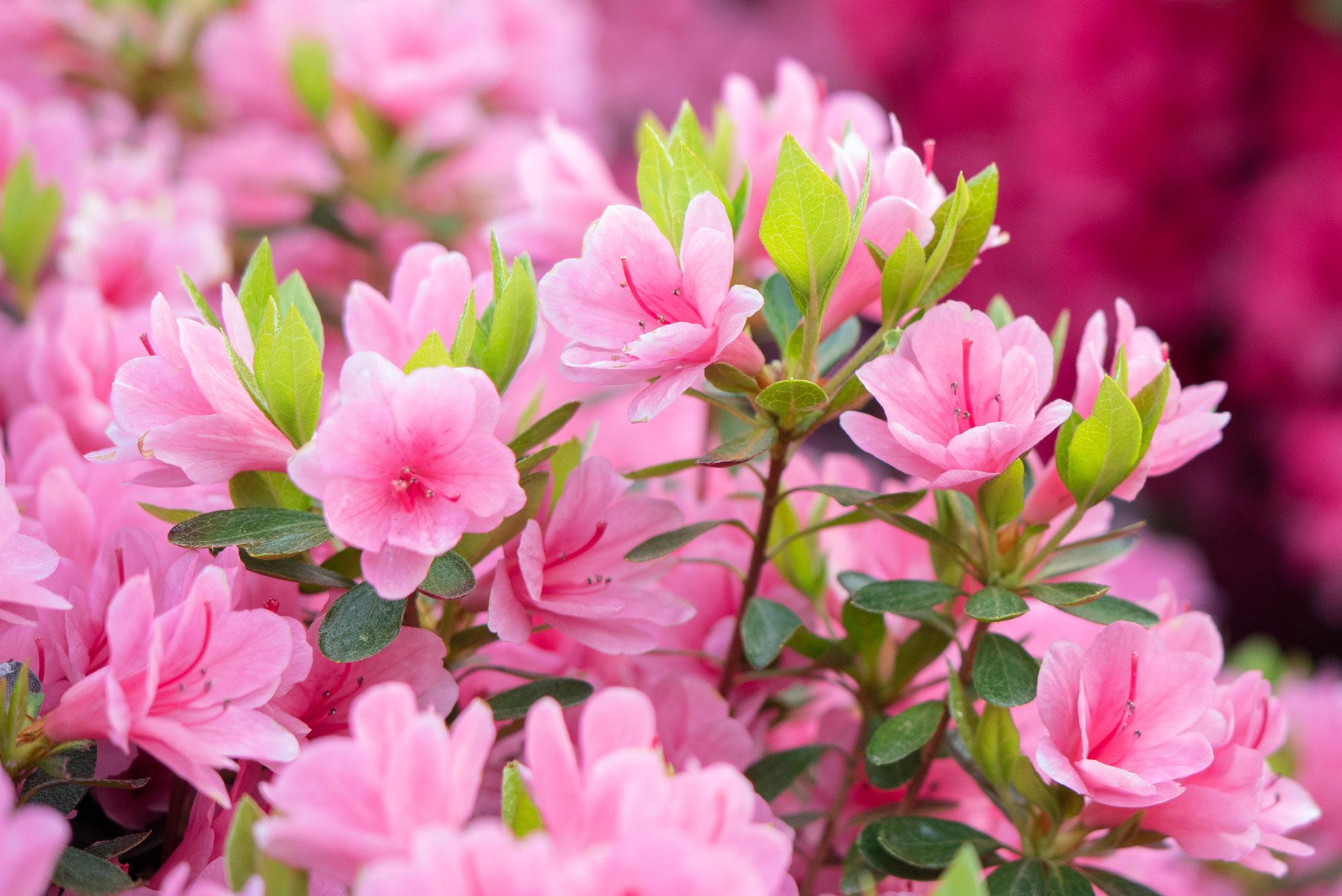
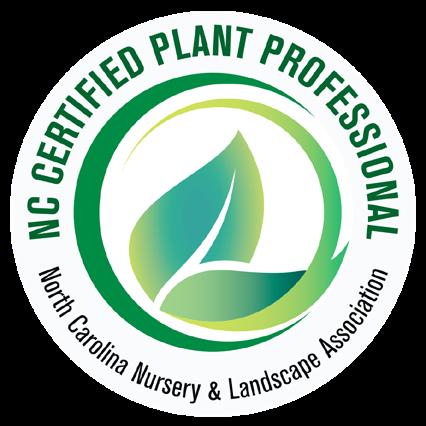
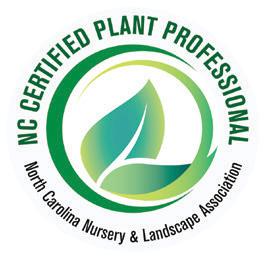

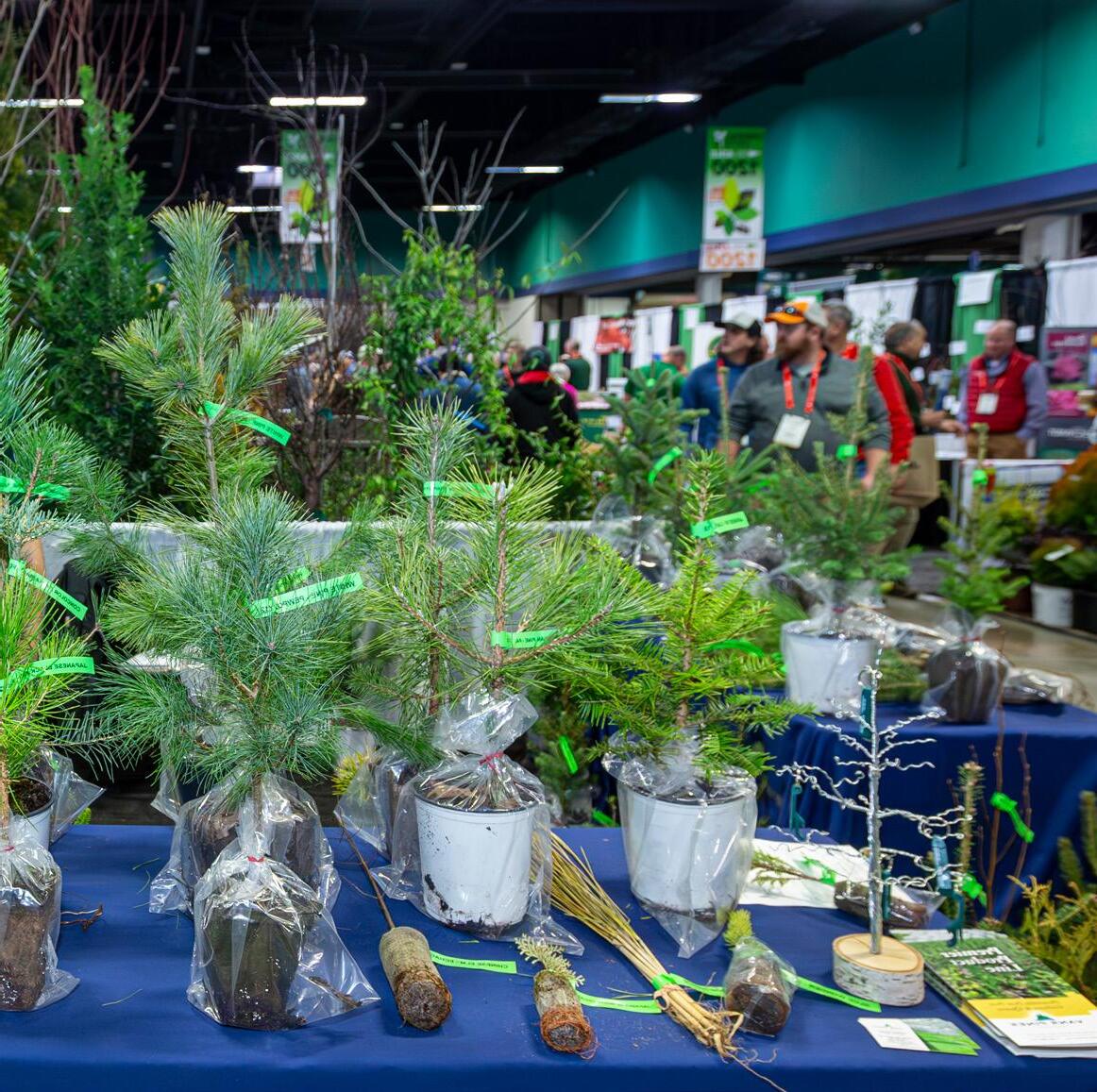
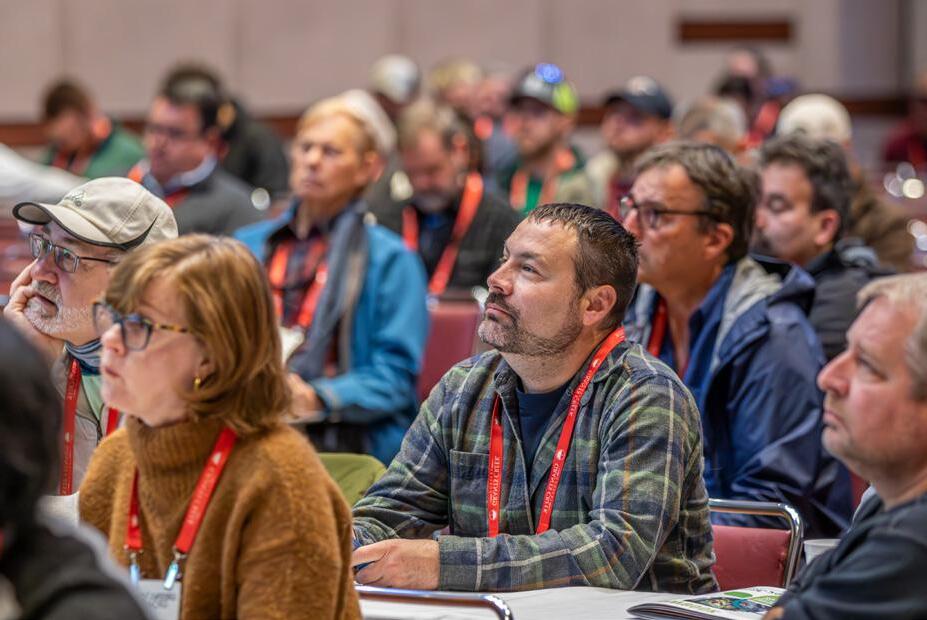
Green & Growin’ returns to Greensboro this January, bringing together thousands of green industry professionals for five days of education, networking and business growth.
Education Conference: January 19-21 at the Sheraton Greensboro at Four Seasons
Specialty sessions, education workshops and certification exams designed to help you sharpen your skills, earn continuing education units (CEUs) and stay current on industry standards.
Marketplace Trade Show: January 22-23 at the Greensboro Coliseum Special Events Center. Discover plants, products and services from more than 325 exhibitors while making valuable connections that will carry your business forward.
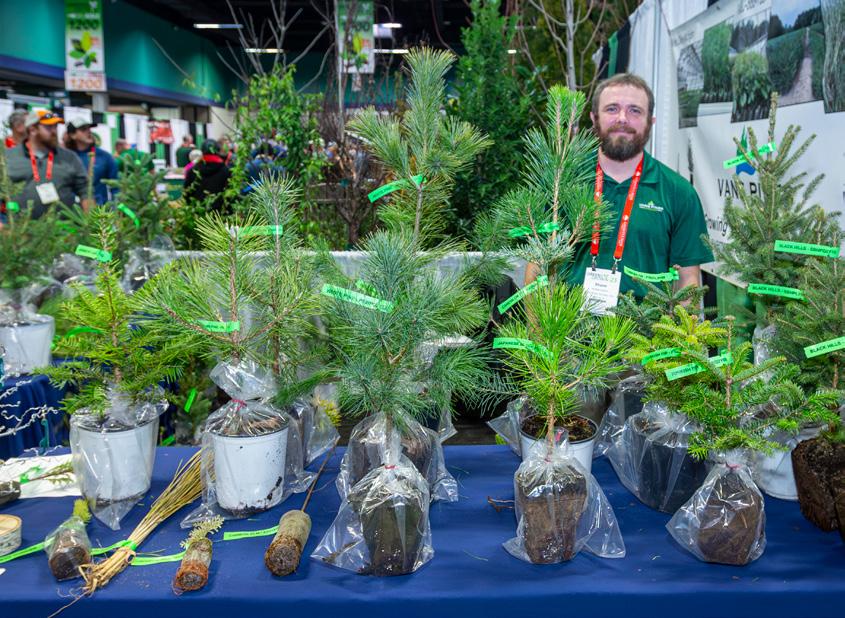


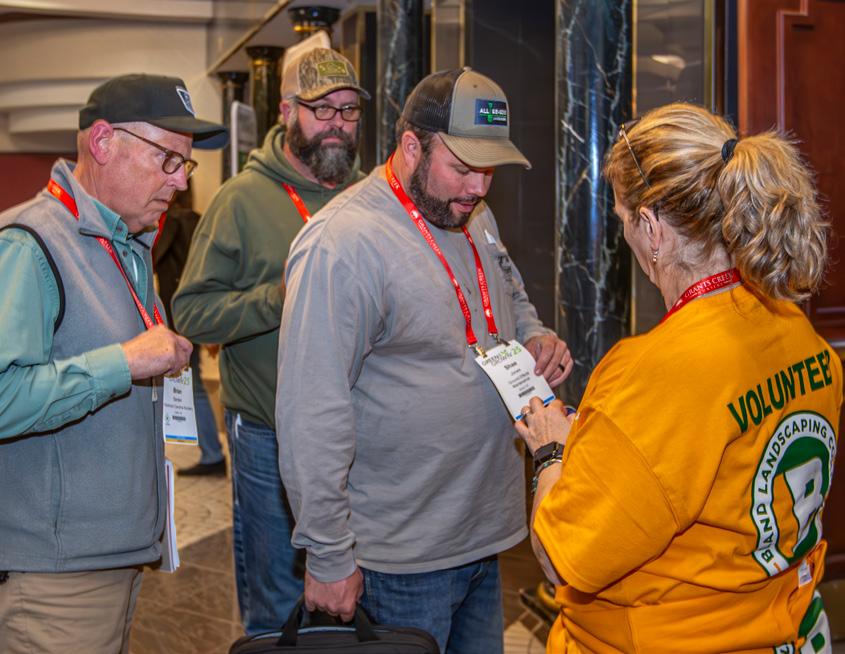
Early Bird Deadline: Early Bird registration ends on December 12, 2025.

Green & Growin’ 26 is packed with exciting updates and new experiences:
The Greensboro Coliseum is now a cashless venue, so please plan accordingly for purchases. A debit or credit card will be required for admission payment.
For the first time, both will take place on Wednesday, January 21 at 7:30 PM for the presentation of the NCNLA Industry Awards, an evening of networking, light hors d’oeuvres and desserts, and the always-popular cornhole tournament.
We’re teaming up with Turf’s Up Radio will be broadcasting live throughout the event. Expect interviews, insights and plen
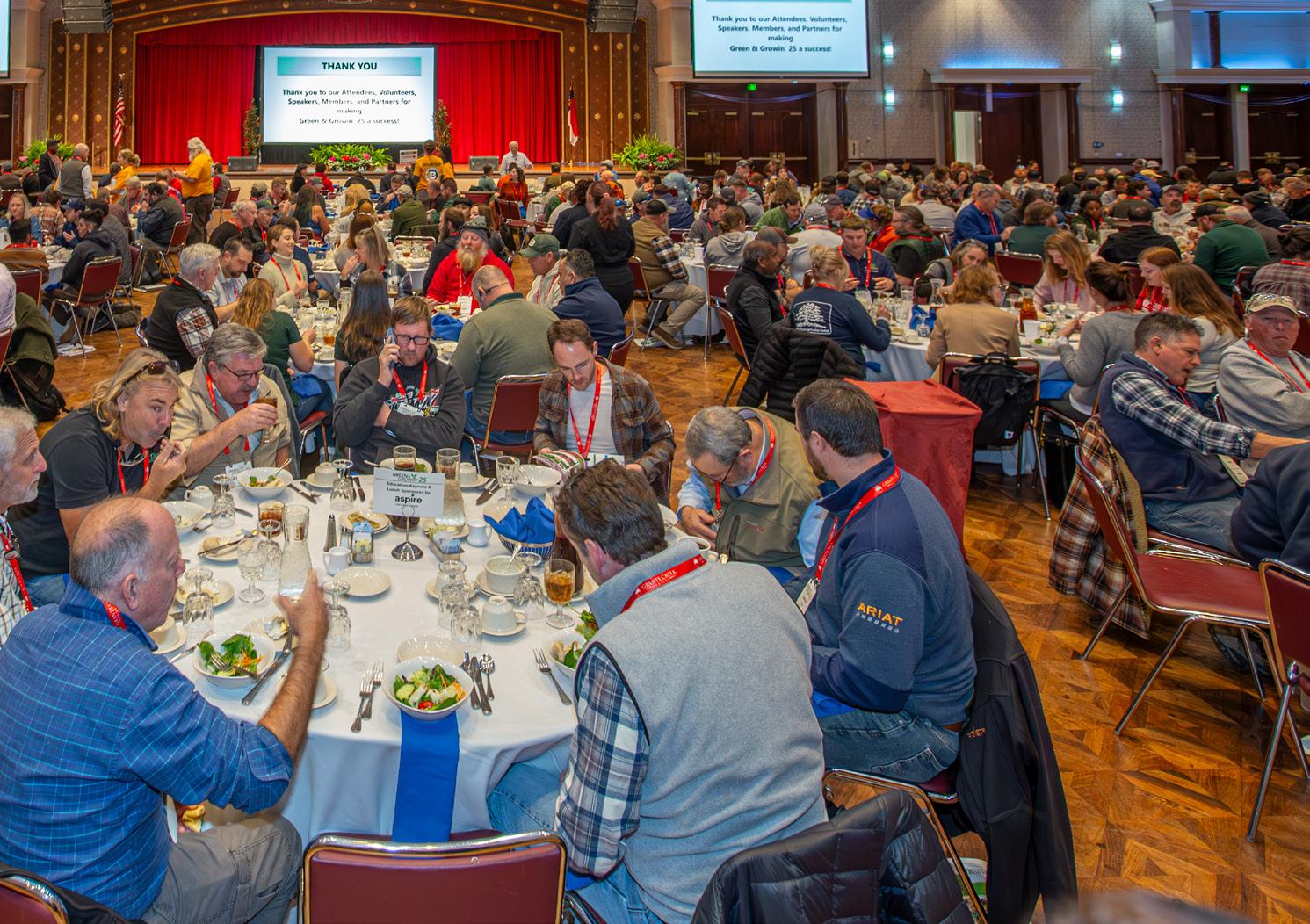
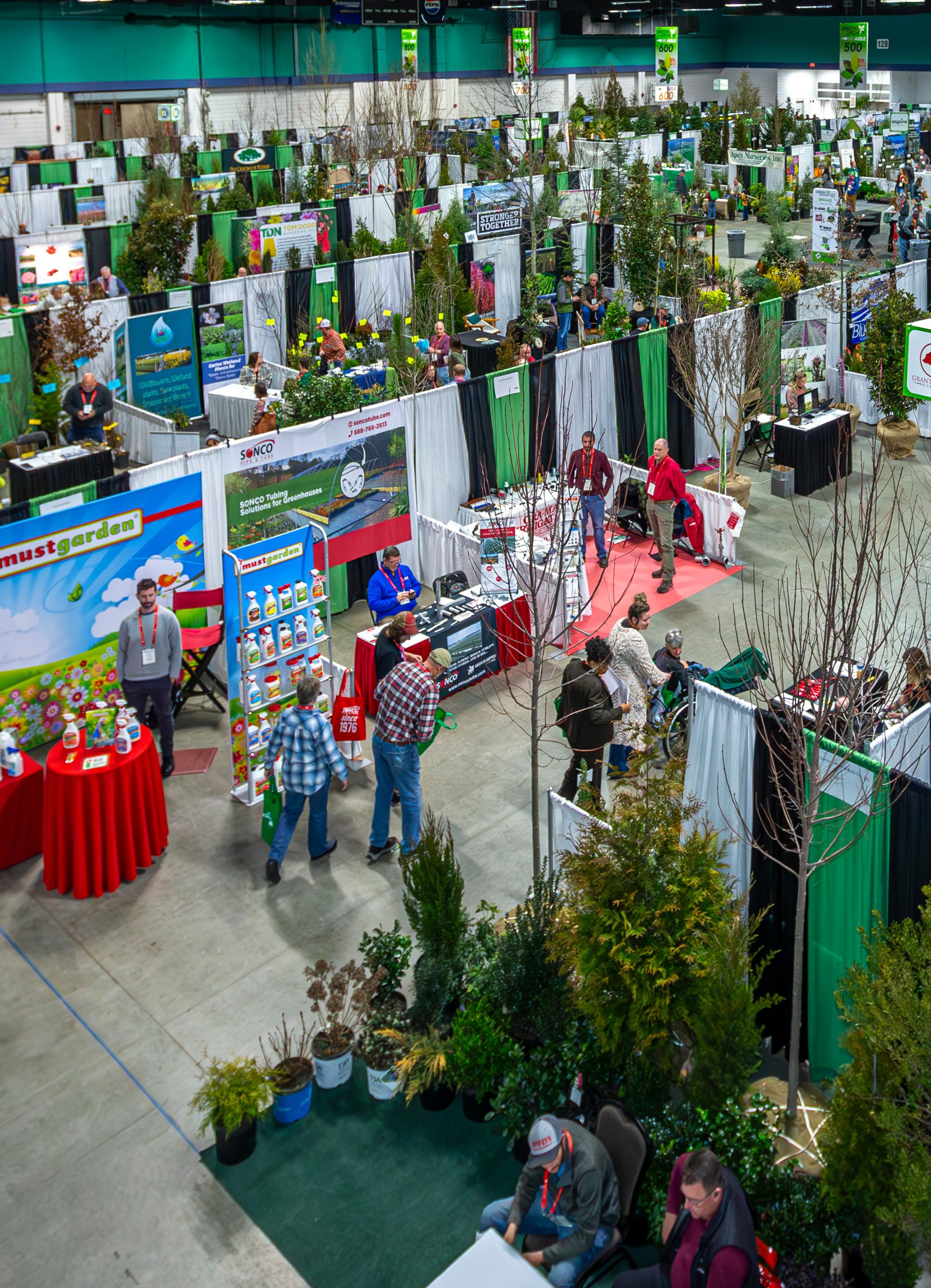
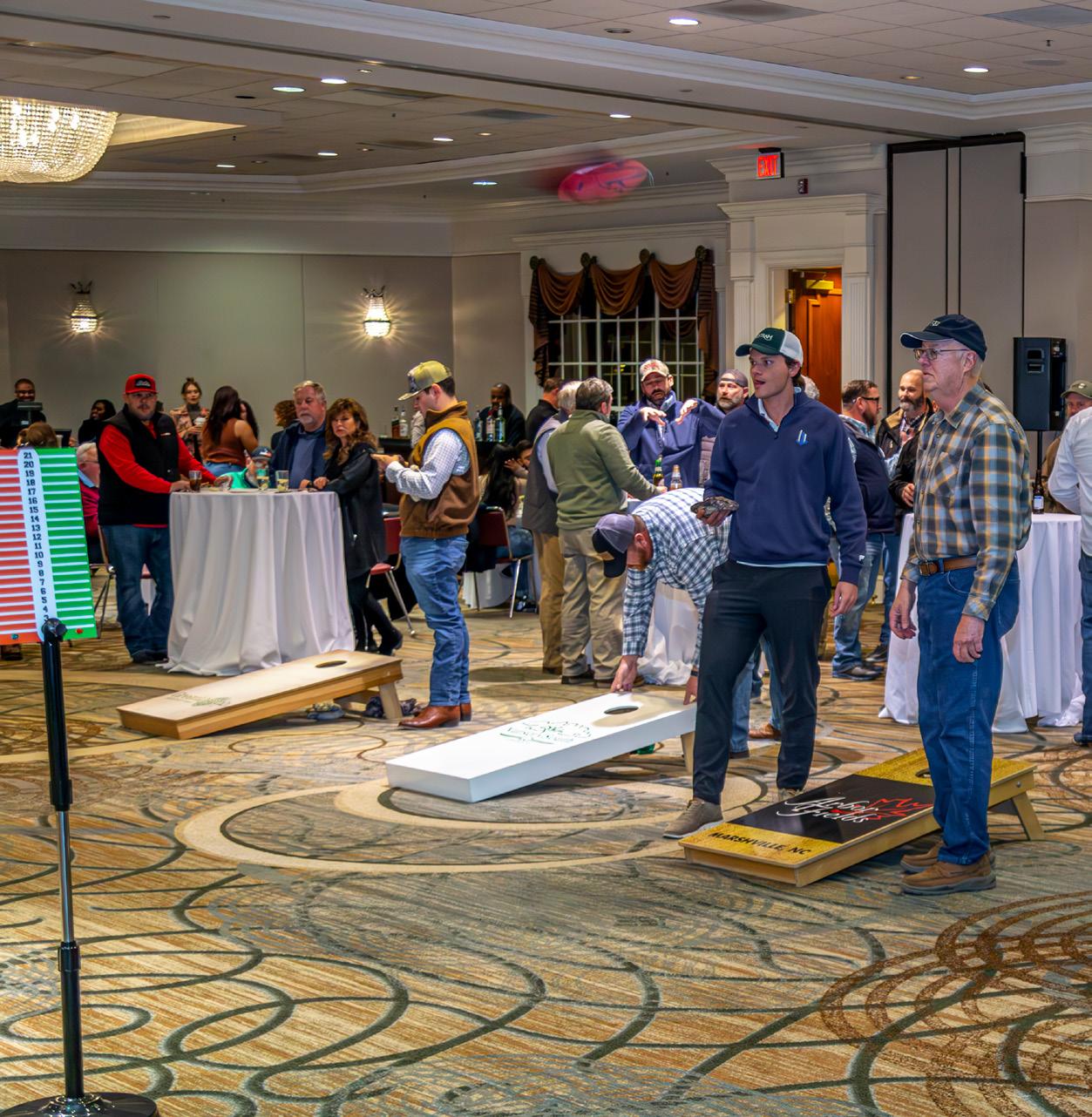
Reserve a table for your team during the Tuesday and Wednesday keynote luncheons at the Sheraton. For pricing and to book, email info@ncnla.com.
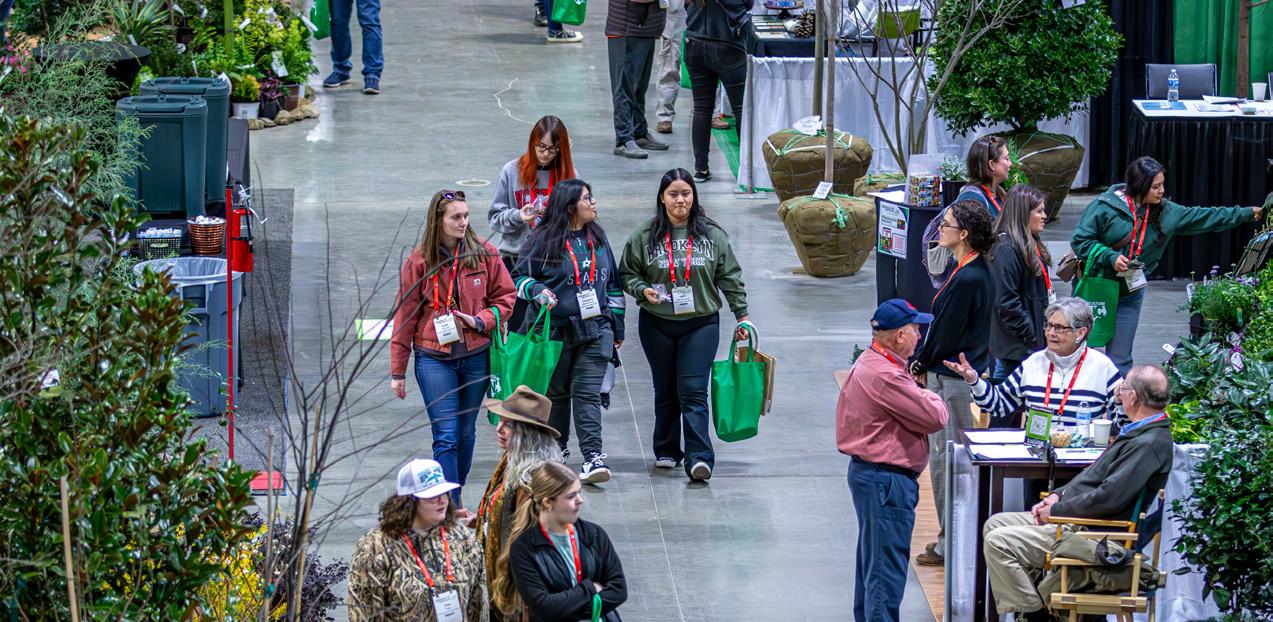
On Friday, Jan. 23, we are excited to offer free admission to the Marketplace to students with a valid school ID. Pre-registration is required for large groups.Email registration@ncnla.com for registration instructions.
EDUCATION:
Sheraton Greensboro at Four Seasons
Monday, January 19
8:30 AM-5:00 PM Specialty Sessions
Tuesday, January 20
7:30-8:30 AM Check-in & Coffee
8:30 AM-3:50 PM Education Sessions
11:30 AM-12:50 PM Lunch & Keynote Address: Dr. Melinda Knuth
Wednesday, January 21
7:30-8:30 AM Check-in & Coffee
8:30 AM-3:50 PM Education Sessions
11:30 AM-12:50 PM Lunch & Keynote Address: Rayne Gibson
January 22-23, 2026
Greensboro Coliseum Special Events Center
Thursday, January 22
9:00 AM-5:00 PM Green & Growin’ Marketplace
Friday, January 23
9:00 AM-2:00 PM Green & Growin’ Marketplace
Wednesday, January 21
7:30-8:15 AM Certified Plant Professional Breakfast, by invitation only. Email cpp@ncnla.com if you are a CPP and did not receive an invitation. —Sheraton
7:30 PM NCNLA Annual Member Meeting & Industry Awards Ceremony —Sheraton: Guilford ABC
8:30 PM President’s Reception —Sheraton: Guilford ABC
Thursday, January 22
7:30 AM Past President’s Gathering —Sheraton
4:30-6:00 PM NC State University Horticulture Science Alumni & Friends Reception —Coliseum
Friday, January 23
11:30 AM-12:30 PM Women in the Green Industry Meeting —Coliseum
Schedule is subject to change.
MONDAY, JANUARY 19, 2026
TIME LOCATION COURSE
8:30 AM - 5:00 PM Biltmore Creating the Ultimate Landscape Design Richard Ludwig
1:00 - 5:00 PM Colony C
Fundamentals of Permeable Paver Installation (2hrs) Nick Pintauro, SiteOne Basics of Lighting and Artistic Design (2hrs) JB Liefert, SiteOne
1:00 - 5:00 PM Colony A Landscape Weed ID Workshop Dr. Joe Neal, NCSU
TUESDAY, JANUARY 20, 2026
TIME LOCATION COURSE
8:30 - 11:30 AM Auditorium II CPP Review Matt Jones, Colby Griffin, Sam Marshall, Rhiannon Goodwin, NCSU
8:30 AM - 5:00 PM Auditorium III NC Commercial Pesticide Applicator Training School 1:00 PM Auditorium II CPP Exam
WEDNESDAY, JANUARY 21, 2026
TIME LOCATION COURSE
8:30 - 11:30 AM Auditorium III NC Commercial Pesticide Applicator Training School 1:00 PM Auditorium III Pesticide Exam
CEU Opportunities The NCNLA applies for continuing education credits from the following entities:
● LC Landscape Contractor License (NC) — Technical CEU
■ LCB Landscape Contractor License (NC) — Business CEU
● LA Landscape Architect License (NC)
● IC Irrigation Contractor License (NC) — Technical Irrigation CEU
■ ICB Irrigation Contractor License (NC) — Business CEU
● PA Pesticide Applicator License (NC)
● ISA International Society of Arboriculture — Certified Arborist
Please note that Marketplace attendees will not be able to earn CEUs by walking the trade show floor. In lieu of offering this credit, we will continue to seek credit approval for the sponsored demonstrations.
TUESDAY, JANUARY 20, 2026
7:30-8:30 AM: Check-in & Coffee
EDUCATION TRACKS BUSINESS OPERATIONS
Location Guilford D
8:30 - 9:20 AM Be at Your Best Every Day: 5 Principles to Consistent Sales Success
David Fellman, David Fellman & Associates
9:30 - 10:20 AM Green Industry Safety Andy Sterlen, NCDOL
10:30 - 11:20 AM Financial Mastery: Navigating Excellence in Accounting and Finance
David Whittaker, EquiScape Business Advisors, LLC
11:30 AM - 12:00 PM: Lunch, available on a first-come, first-served basis
12:00 - 12:50 PM: Keynote Presentation
LANDSCAPE OPERATIONS TREE CARE PESTS, WEEDS & DISEASES
Guilford E
Is it Warm in Here? A Practical Approach to Landscaping in Our Changing Climate
Bryce Lane, Horticulturalist
The Dirt on Policy: What Lawmakers Are Planting in Your Industry?
Ashley Thomas, Farm Bureau
Beyond Plants: Exploring the Elements and Principles of Landscape Design
Dr. Jennifer Bradley, UMO
Dr. Melinda Knuth, NC State University
Guilford F Guilford G
Beneath the Bark: Identification and Management of (Exciting) Wood Boring Beetles
Courtney Johnson, NCSU graduate student
Lord of the Flies: Spotted Lanternfly in NC
Dr. Kelly Oten, NCSU
The Fungus Among Us
Laurie Reid, City of Charlotte Arborist
Green Means Growth: The Economic Impact of the NC Green Industry
Defeating Persistent Weeds in Landscape Plantings
Joe Neal, NCSU
What New with Your Pesticide Certification and Training Rules
Travis Snodgrass, John Feagans, NCDA&CS
Beauty and the Feast: Elm Zigzag Sawfly and Other Defoliators of Ornamentals
Delaney Serpan, NCSU graduate student
North Carolina’s green industry is not just about beautification. It’s a powerhouse for jobs, economic activity, and environmental benefits. In this session, we’ll unpack the findings of the recent NC State / NC Green Industry Council report. By the end of this session, you’ll gain a clear understanding of how NC’s green industry contributes to the state’s economic vitality, what opportunities lie ahead, and what challenges must be addressed to sustain this growth.
EDUCATION TRACKS FLORICULTURE
Location
1:00 - 1:50 PM Know to Grow: Top Nutritional Issues
2:00 - 2:50 PM
3:00 - 3:50 PM
D
Dr. Brian Whipker, NCSU
Planting with Purpose: Making Sustainability Work for Your Business
Dr. Melinda Knuth, NCSU
Strategies for Insect Control in the Greenhouse
Cam Coor, Ornamental Manager, Triangle Chemical

LANDSCAPE OPERATIONS TREE CARE PESTS, WEEDS & DISEASES
E
Soils: What Landscapers Need to Know
Dr. Don Edralin, NCDA&CS
Don’t Feed the Algae: Strategies to Help Stop Growing Blooms
Gloria Putnam, NC Sea Grant
Not Just Pruning
Alan Erwin, Panther Creek Nursery
F
Not Mulch Up Bill Leake, Leake Tree Consulting Services
Managing Tree and Construction
Patrick Anderson, Rainbow EcoScience
Proper Tree Planting Techniques
Keith O’Herrin, NCSU
G
Let’s Talk About Pesticides and Pollinators
Amanda Bratcher, NCSU
Japanese Maple Scale Management in the Landscape
Dr. Karla Addesso, TSU
Natural Pest Controls
Eric Jones, Turf Teacher Inc.
This is an Education schedule preview and is subject to change. The final schedule will be featured online and available in the on-site showbook. NCNLA applies for continuing education units (CEUs) from various state and national entities. For CEU status updates, please visit www.greenandgrowin.com.
WEDNESDAY, JANUARY 21, 2026
EDUCATION TRACKS BUSINESS OPERATIONS
7:30-8:30 AM: Check-in & Coffee
LANDSCAPE OPERATIONS IRRIGATION TURF MANAGEMENT GROWERS
Location Guilford D Guilford E Guilford F Guilford G Auditorium II
8:30 - 9:20 AM Exiting 101 | Setting Yourself up for a Successful Transition
Liz Vetter, James Gorzynski, Philip Kolb, New Leaf Brokerage
9:30 - 10:20 AM Sales Manager Vs. Sales Leader: Which Are You?
Rayne Gibson, Taproots Horticulture Consulting
10:30 - 11:20 AM What We Learned from Hurricane Helene
Bill Jones, Carolina Native Nursery
PPE Transportation Storage and Security of Pesticides
Eric Jones, Turf Teacher, Inc.
Landscape Under Siege: Identifying and Reporting New Invasive Pests
Amy Michael, NCDA&CS
Dr. HT Tseng, NCDA&CS
Josie Pasche, NCDA&CS
Eliminating Murder: How Not to Kill Plants
Bryce Lane, Horticulturist
There’s a Fire in the Wire
Jason Shanabarger, The Toro Company
There’s a Fire in the Wire: Tools for Advanced Troubleshooting
Jason Shanabarger, The Toro Company
Understanding Soil-Plant-Water Relationships for Optimal Scheduling
Dr. Grady Miller, NCSU
Rayne Gibson, Taproots Horticulture Consulting Passion is Not Leadership
11:30 AM - 12:00 PM: Lunch, available on a first-come, first-served basis
12:00 - 12:50 PM: Keynote Presentation
EDUCATION TRACKS
How to Save Money in Turfgrass Management
Dr. Ray McCauley, NCSU
You Pick the Pests: Turf Insect Edition
Dr. Terri Billeisen, NCSU
Management of Japanese Maple Scale and Other Pests Threatening Container Production
Karla Addesso, TSU
Selling Solutions, Not Just Plants: Rethinking Value in the Green Industry
David Hoffman, Hoffman Nursery
New Challenges and Changes Ahead with Turf Pesticides
Dr. Travis Gannon, NCSU
Get the Most Out of Preemergence
Herbicide Programs in Container Nurseries
Dr. Joe Neal, NCSU
In this thought-provoking keynote, we will debunk the myth and delve into the intricate layers that truly define exceptional leadership. Embark on a Paradigm-Shift Journey: Discover the power of passion as a driving force, but go beyond the surface to explore why it’s not the sole ingredient for effective leadership. Illuminate the Pitfalls: Explore the limitations of passion-driven leadership and learn from real-world examples where passion alone fell short in the face of leadership challenges. Unlock the Components of True Leadership: Dive deep into the essential qualities of successful leaders, from emotional intelligence to strategic vision and team collaboration. Nurture Your Leadership Growth: Walk away with practical insights and actionable strategies to develop and enhance your leadership skills, ensuring you are equipped to lead with purpose and impact. Ignite Your Leadership Potential: This keynote isn’t just a speech; it’s a call to action! Be inspired to transcend the passion paradigm and embrace the multifaceted dimensions of true leadership.
EXPLORING NATIVE PLANTS

LANDSCAPE OPERATIONS IRRIGATION TURF MANAGEMENT GROWERS
Location Guilford D Guilford E Guilford F Guilford G Auditorium II
1:00 - 1:50 PM Southern Stars - Natives Trees and Shrubs that Work in Real Landscapes
Mark Weathington, JCRA
2:00 - 2:50 PM Native Perennials for the Shady Site
Shannon Currey, Izel Plants
3:00 - 3:50 PM Adding Native Plants and Conservation Landscaping to Your Services
Gloria Putman, NCSU
Amy Mead, NCSU
Pond Management and its Relation to Turf and Plant Health
Trent Nelson, Kasco Marine
Water-Wise by Design: Creating Sustainable Landscapes in North Carolina
Amy Mead, NCSU
Zen and the Art of Landscape Maintenance
Tom Joyce, Tom Joyce Consulting
Advanced Troubleshooting: Electrical Diagnostics for Irrigation Systems
Maggie Sarver, Tucor
Drip Irrigation for Shrubs, Flower Beds, and Groundcovers
Rainbird
Applying Pump Station Curves in the Field
SiteOne
Diagnosis and Management of Turfgrass Diseases in the Landscape
Dr. Jim Kerns, NCSU
Turfgrass Weed Management: Identification, Control Strategies, and Emerging Technologies
Dr. Navdeep Godara, NCSU
Precision Turfgrass Management for Optimized Pest Management
Dr. Qiyu Zhou, NCSU
Labor Saving Innovations in Nursery Production
Dr. Anthony LeBude, NCSU
Soilless Substrates for Nursery Production: Trends, Innovations, and Management Strategies
Dr. Brian Jackson, NCSU
New Plant Showcase
This is an Education schedule preview and is subject to change. The final schedule will be featured online and available in the on-site showbook. NCNLA applies for continuing education units (CEUs) from various state and national entities. For CEU status updates, please visit www.greenandgrowin.com.
NOTE: All Education registrations after Jan. 16, if available, will incur a $50 processing fee.
Creating the Ultimate Landscape Design, Richard Ludwig (Monday) *NEW*
1-day workshop for newcomers & veterans; Includes Monday lunch
Fundamentals of Permeable Paver Installation & Basics of Lighting and Artistic Design (Monday Afternoon, 1:00 - 5:00 PM) *NEW*
4-hour workshop; Includes Monday lunch at 12 PM
Landscape Weed ID Workshop (Monday Afternoon, 1:00 - 5:00 PM) *NEW*
4-hour workshop; Includes book and Monday lunch at 12 PM
Commercial Pesticide Applicator Training School (Tuesday & Wednesday)
1½-day class, includes books & lunch both days; Separate fee required for Wednesday exam and paid onsite to NCDA&CS via cash, check or money order. Registration will close on December 31
Certified Plant Professional (CPP) Review (Tuesday Morning, 8:30 - 11:30 AM) 3-hour class, includes lunch; Separate fee required for Tuesday afternoon CPP Exam and exam takers must register online at www.ncnla.com. Registration will close on December 31
Green & Growin’ 26 is made possible through the commitment of our sponsors. Their investment helps us provide high-quality education, valuable connections and a Marketplace that brings our industry together.
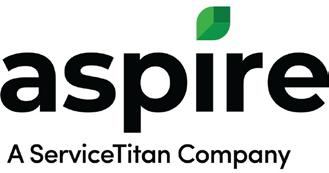
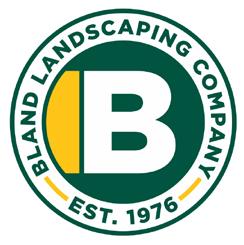




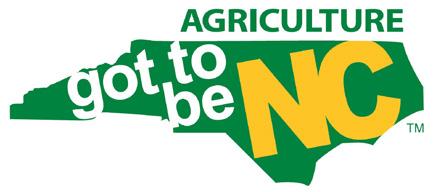
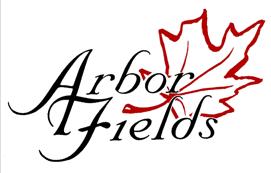




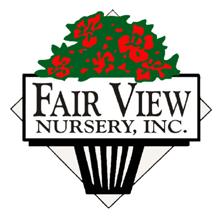


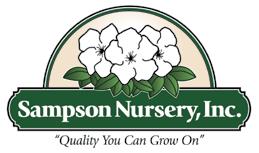
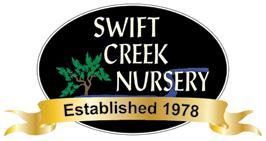

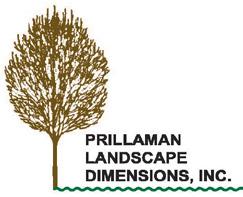
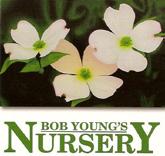






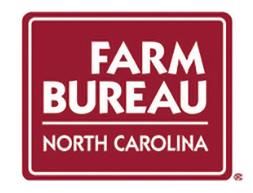


















Thank you to the members who have already renewed for 2025–2026!
If you haven’t had a chance to renew yet, now’s the time! Just complete and submit the renewal form to continue enjoying your NCNLA member benefits.
Not yet a member? You may be receiving this magazine because you attended a past Green & Growin’ event as a non-member. If you’d like to join NCNLA and gain full access to resources, education, advocacy, and industry connections, simply complete the same form and become part of our growing community.
Company Name: Contact Name:
New Member Renewal
(Please select one category)
1. Member (NC-based businesses)
Voting privileges are exclusive to this membership category. Dues and profile access are tiered by company size.
# of Employees Annual Dues Included Profiles
< 10 $275 5 individual employee profiles
10–24 $325 10 individual employee profiles
25–49 $425 15 individual employee profiles
50+
$525 20 individual employee profiles
2. Associate Member (Out-of-state businesses)
Available to businesses located outside North Carolina. Dues and profile access are tiered by company size.
# of Employees Annual Dues Included Profiles
< 10
10–24
25–49
50+
$275 5 individual employee profiles
$325 10 individual employee profiles
$425 15 individual employee profiles
$525 20 individual employee profiles
3. Supporting Organization (Non-voting)
For nonprofit associations, educational institutions, government or allied organizations that support NCNLA’s mission and values.
$325/year
Includes 10 individual employee profiles
4. Supporting Individual (Non-voting)
For individuals affiliated with a nonprofit, government agency, or educational institution that supports NCNLA’s mission but is not enrolled as a Supporting Organization member.
$50/year
Includes 1 individual employee profile
5. Student Chapter (Non-voting)
For horticulture or related academic programs at North Carolina-based universities and community colleges.
$275/year
Includes unlimited student profiles + 1 faculty/staff
Designed for student engagement; rosters are updated annually. Additional faculty/staff must join as Supporting Individuals or under a Supporting Organization membership.
6. Sustaining Individual (Non-voting)
For retired individuals who have maintained NCNLA membership in good standing for at least five years.
$50/year
Includes 1 individual profile
Voluntary Contribution to Support NCNLA Advocacy – $25
Promotes and protects the legislative and regulatory interests of our industry.
Voluntary Contribution to Support the NCNLA Scholarship Fund – $25
Provides financial assistance to students enrolled in industry degree programs.
Total Amount Enclosed: $
Please make checks payable to NCNLA or pay online by logging into your company profile at www.ncnla.com.
Note: Dues are not tax deductible as charitable contributions. However, they may be deductible as ordinary business expenses. An estimated 20% is not deductible due to NCNLA’s lobbying activities.












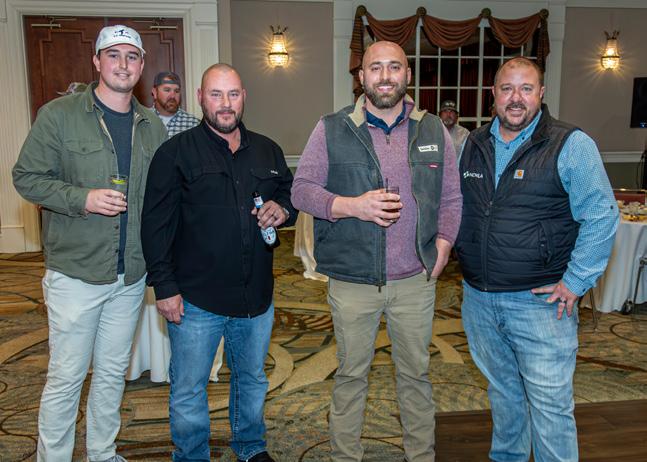


























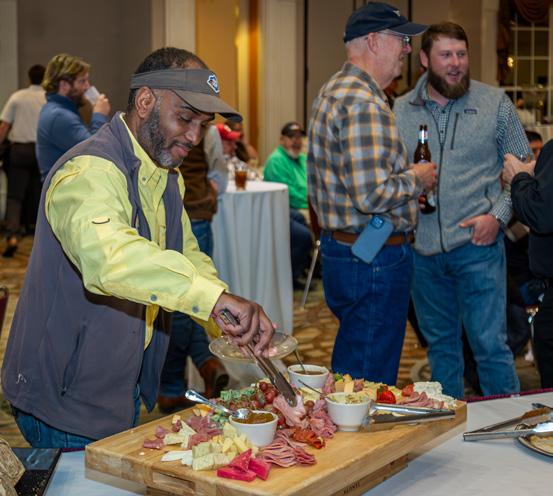



























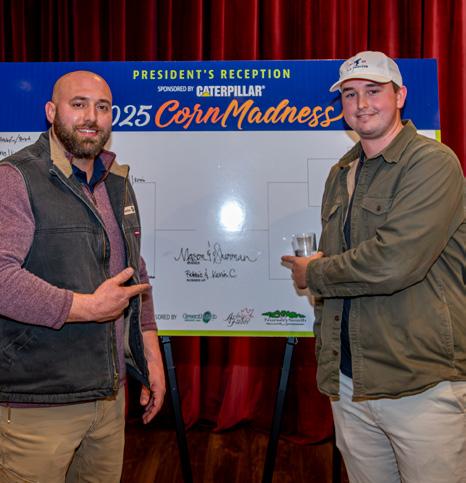
















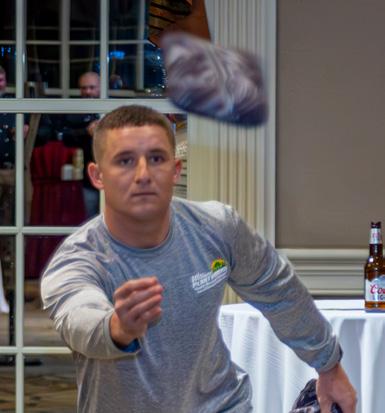














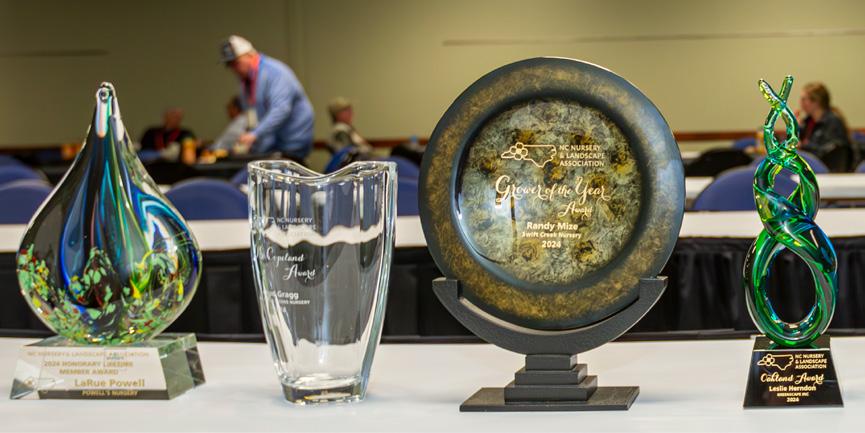


























































For the first time, NCNLA’s biggest evening events are coming together in one exciting night.





Open to all Green & Growin’ 26 participants — attendees, exhibitors, sponsors, speakers, and volunteers. Don’t miss your chance to connect, celebrate, and compete.
















Location: Sheraton, Greensboro, Guilford ABC Ballroom













































































7:30 PM




Wednesday, January 21, 2026 EVENT SCHEDULE













NCNLA Annual Member Meeting (Only NCNLA Members may vote during this meeting) 8:00 PM
2025 NCNLA Industry Awards Ceremony 8:30 PM

President’s Reception


Hors d’oeuvres, drinks & desserts









Cornhole Tournament Registration













9:00 PM - 11:00 PM

















Cornhole Tournament




























